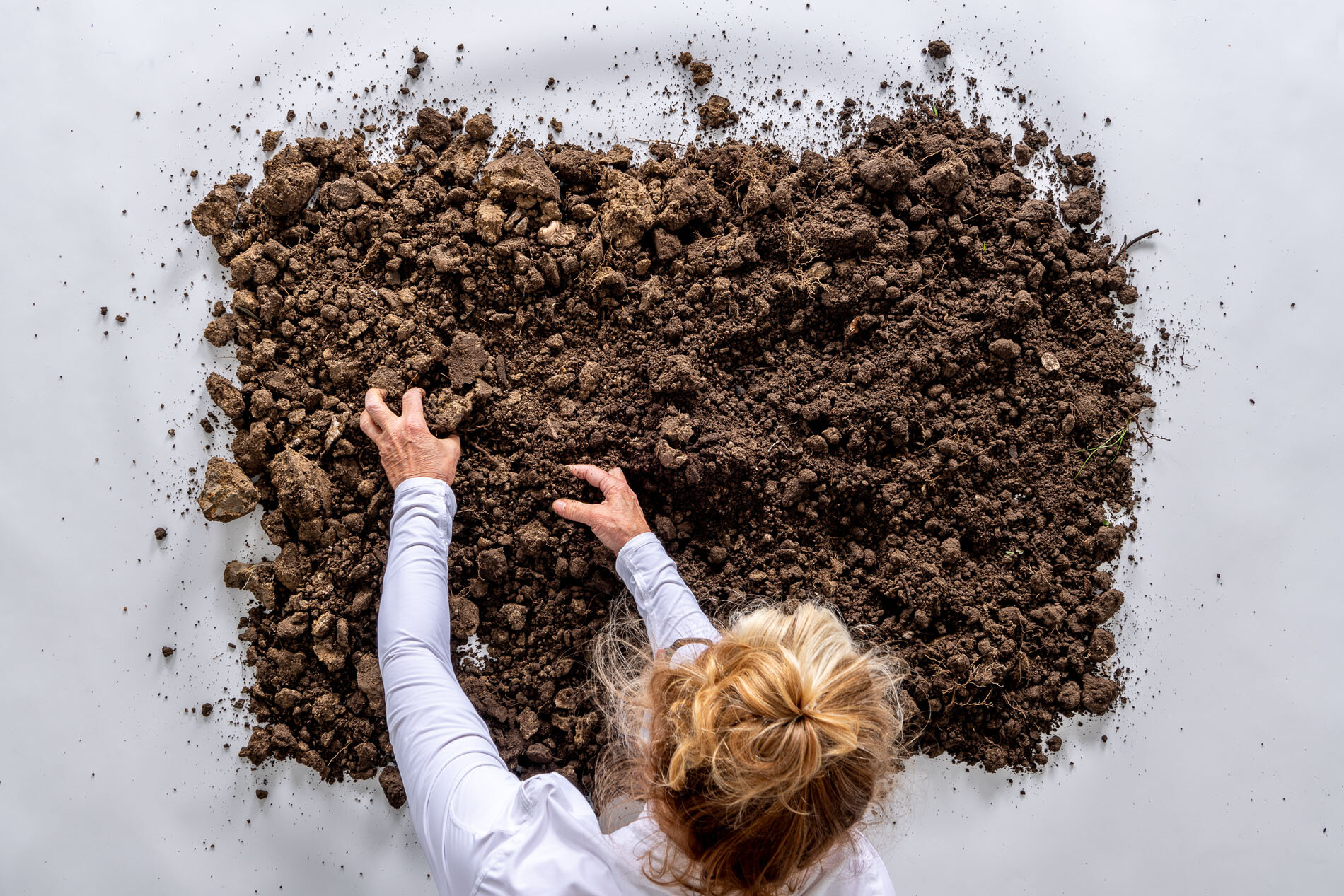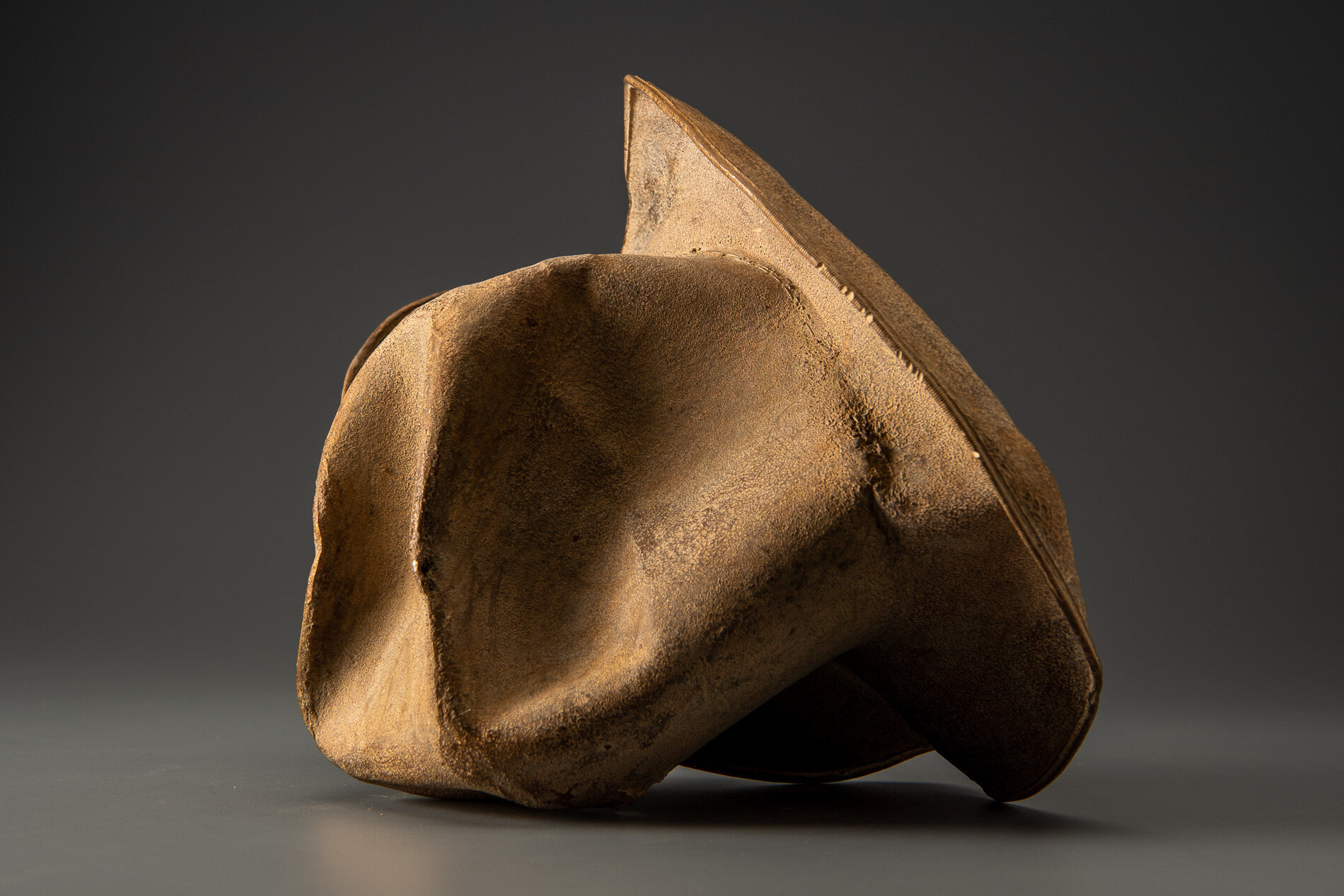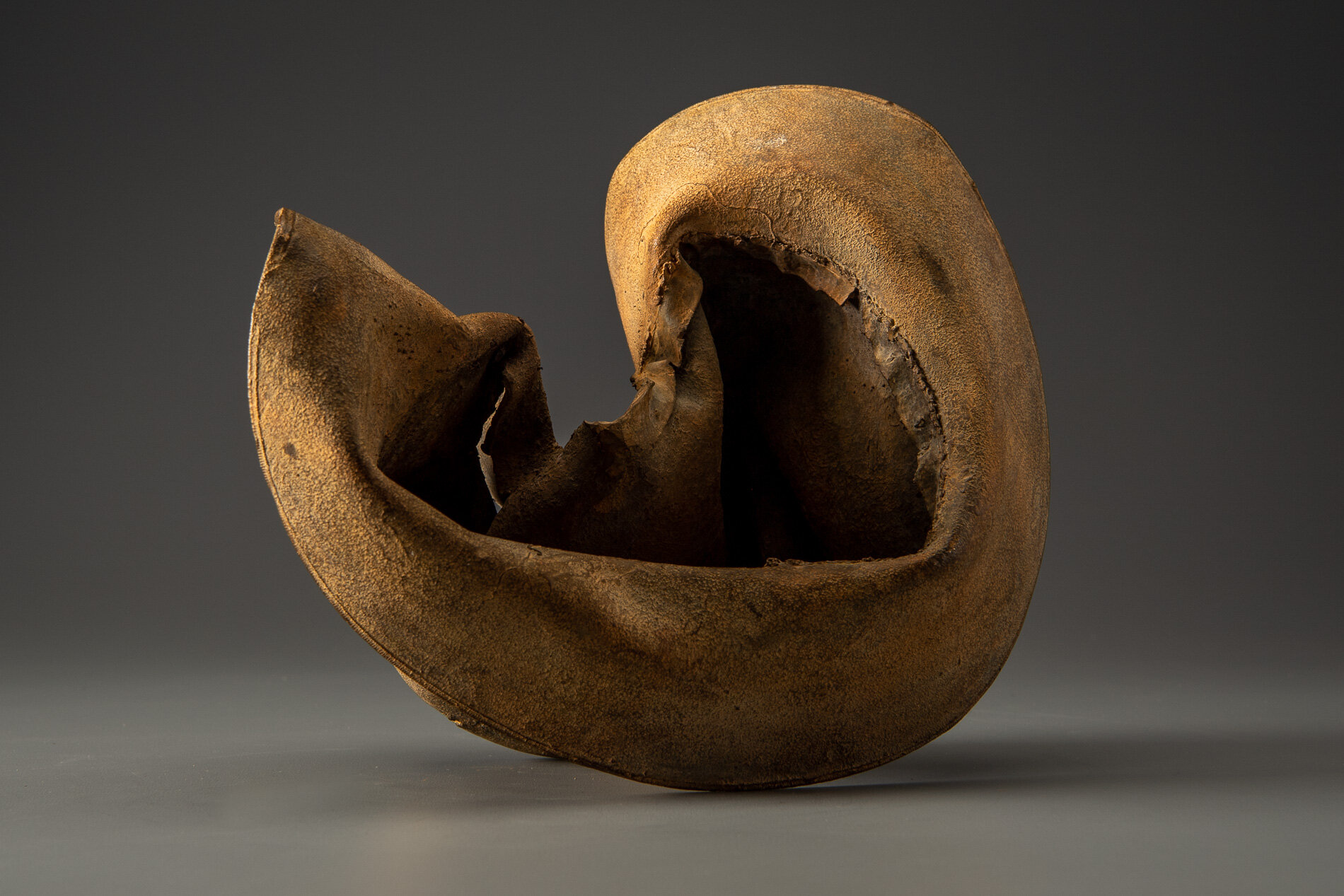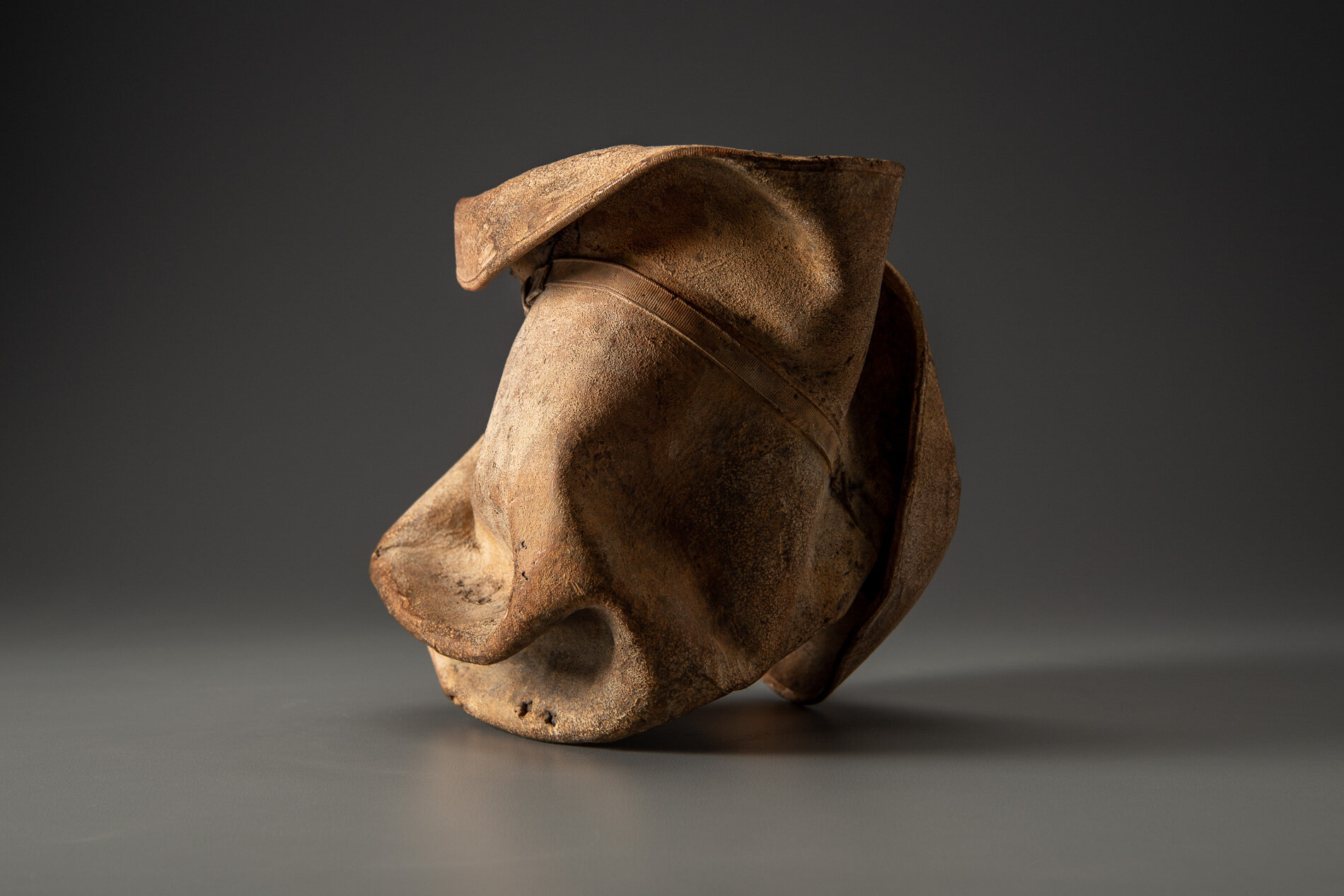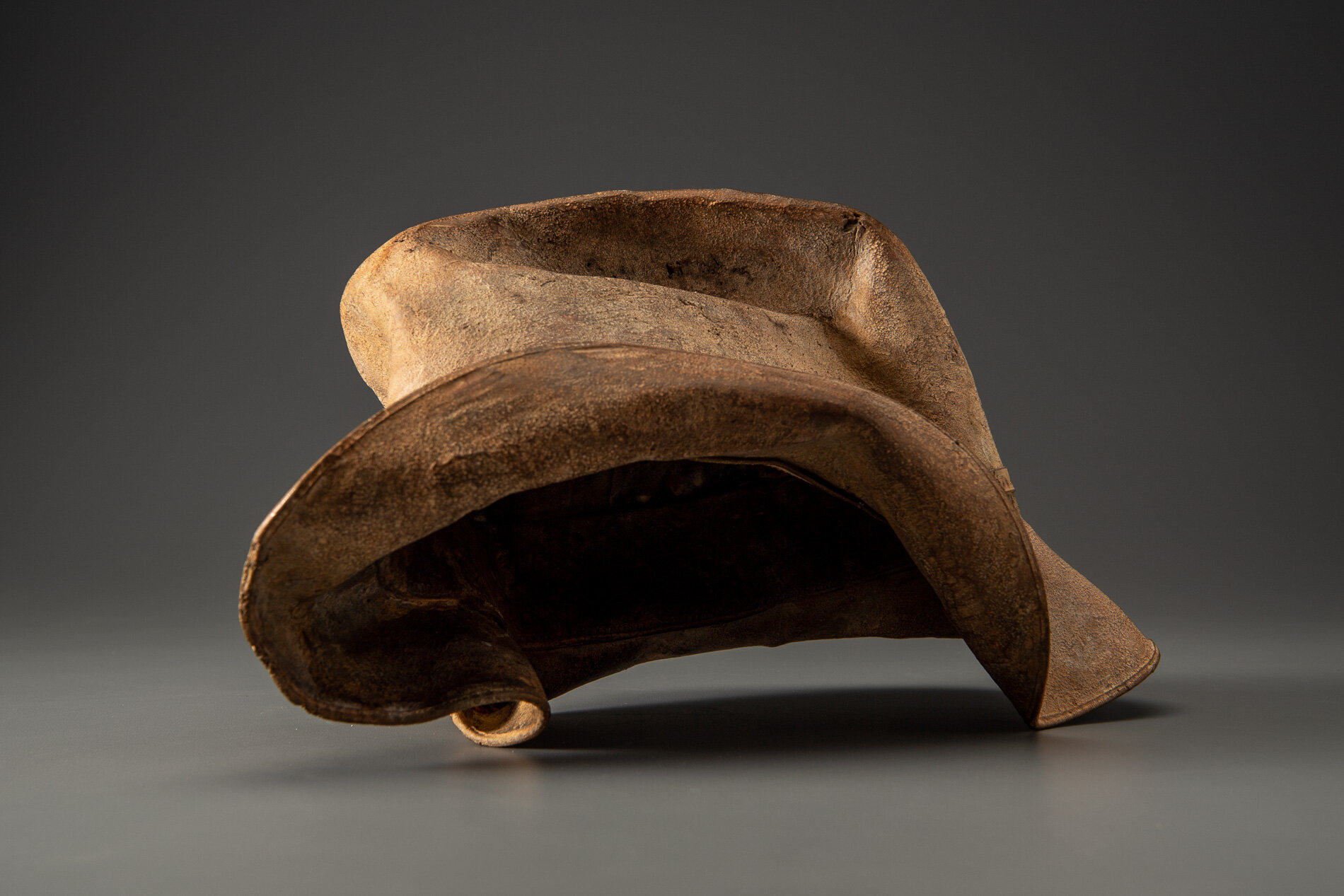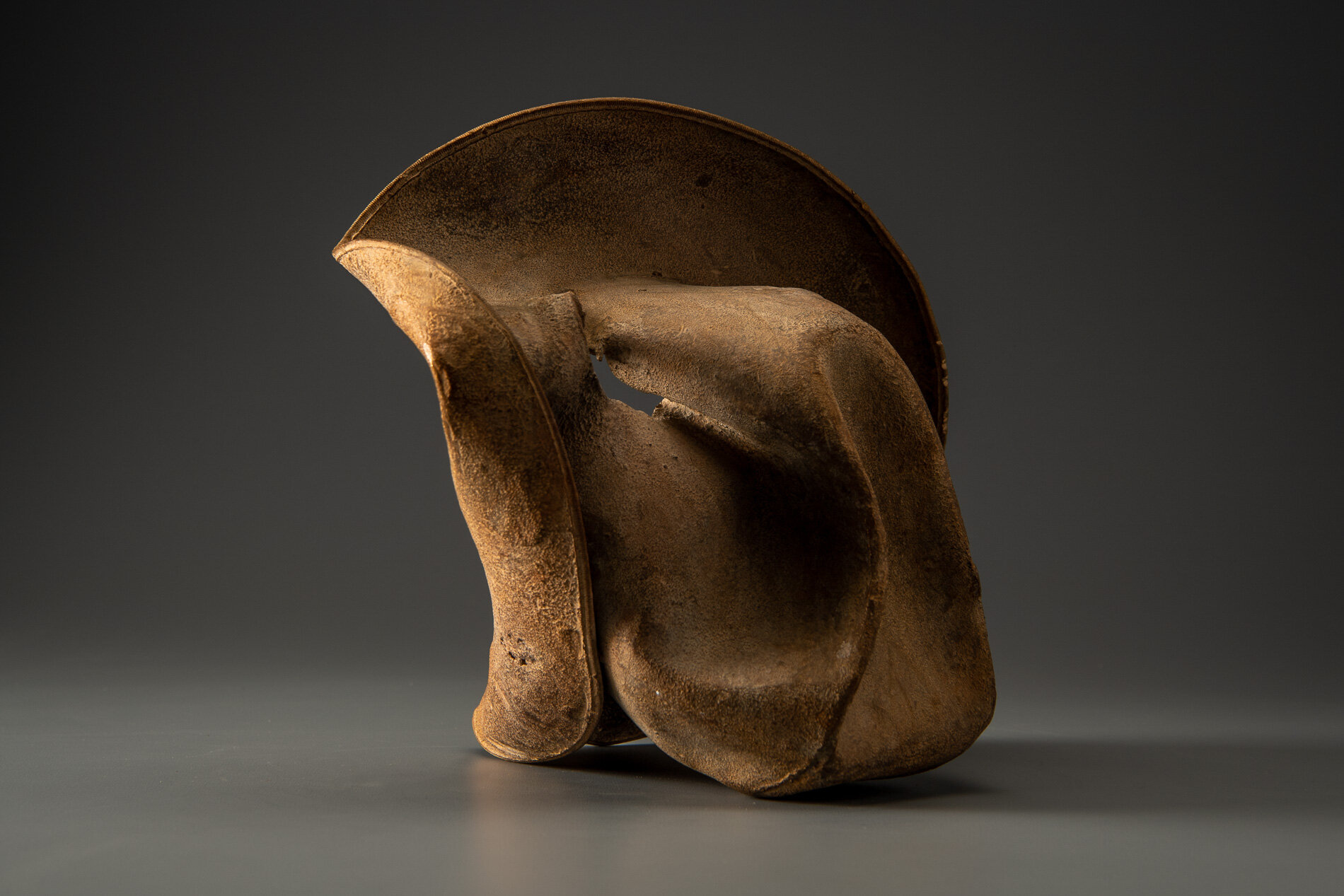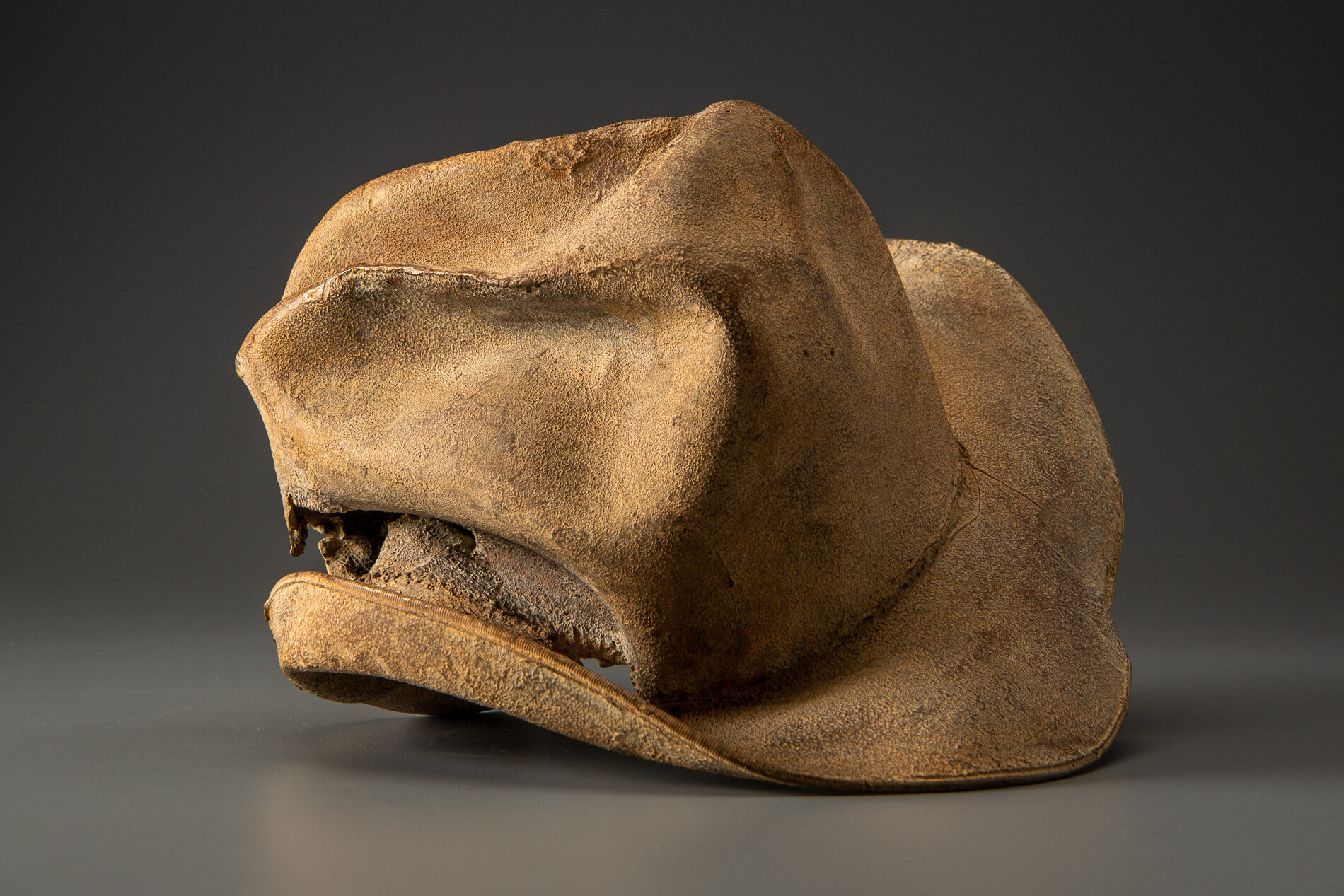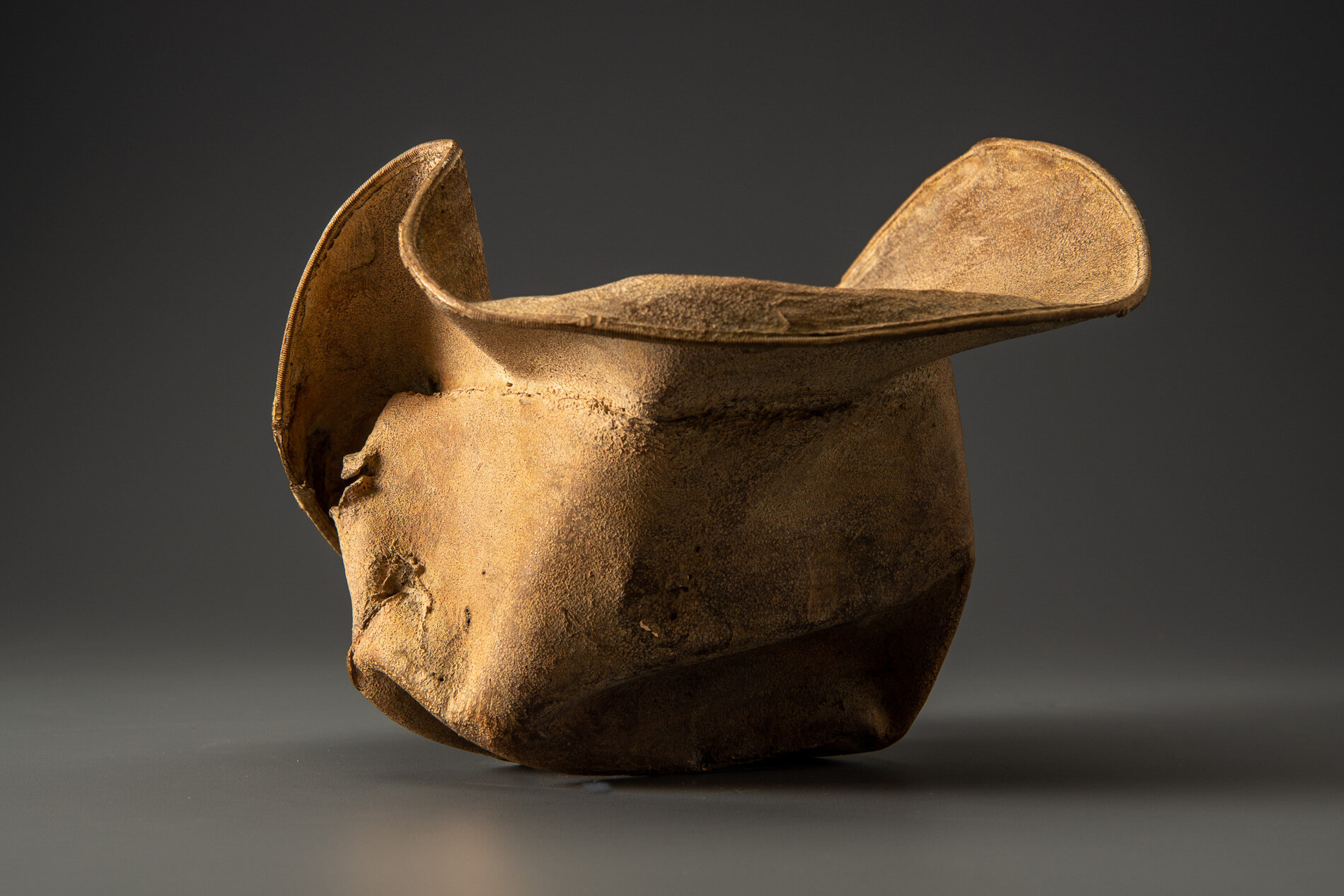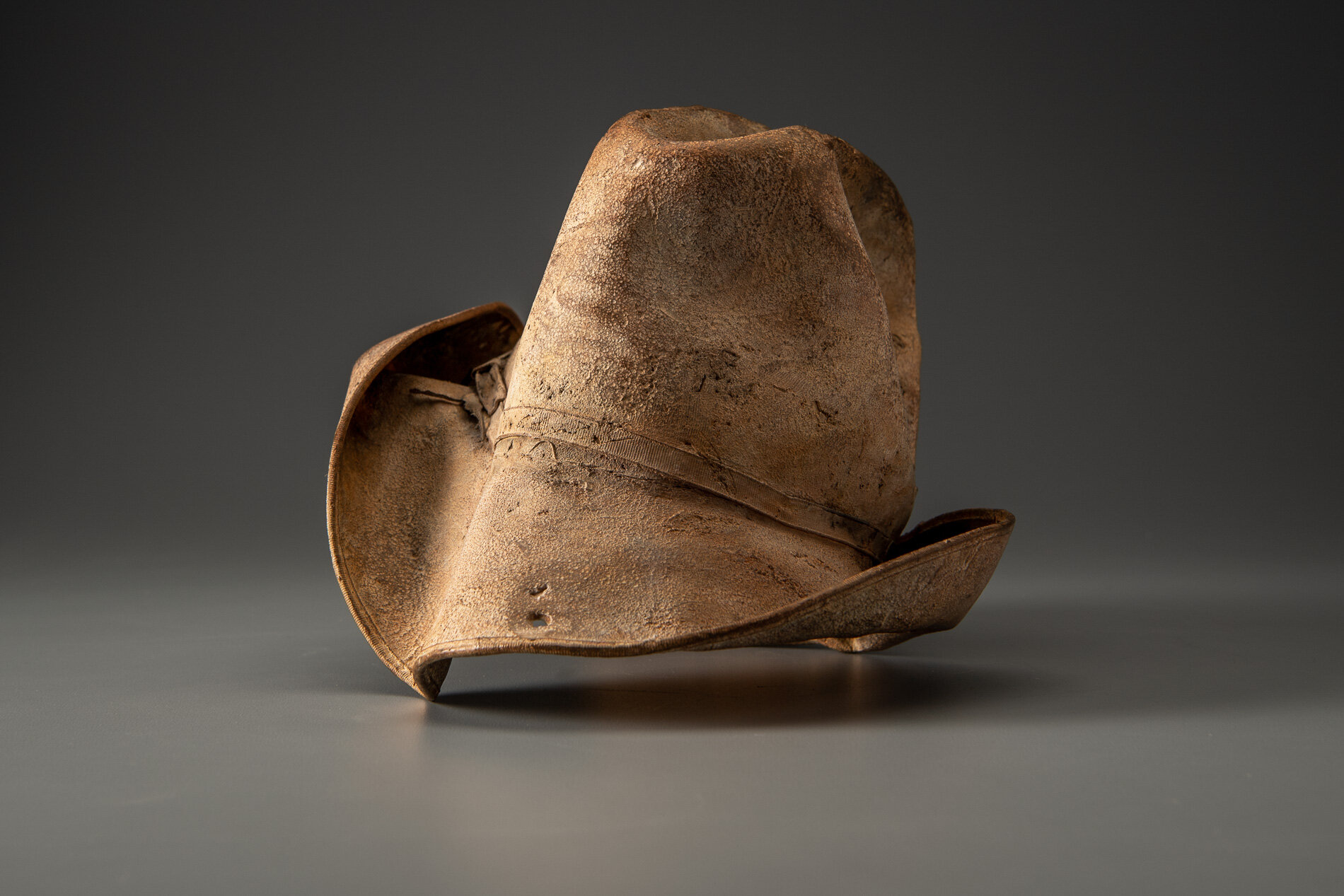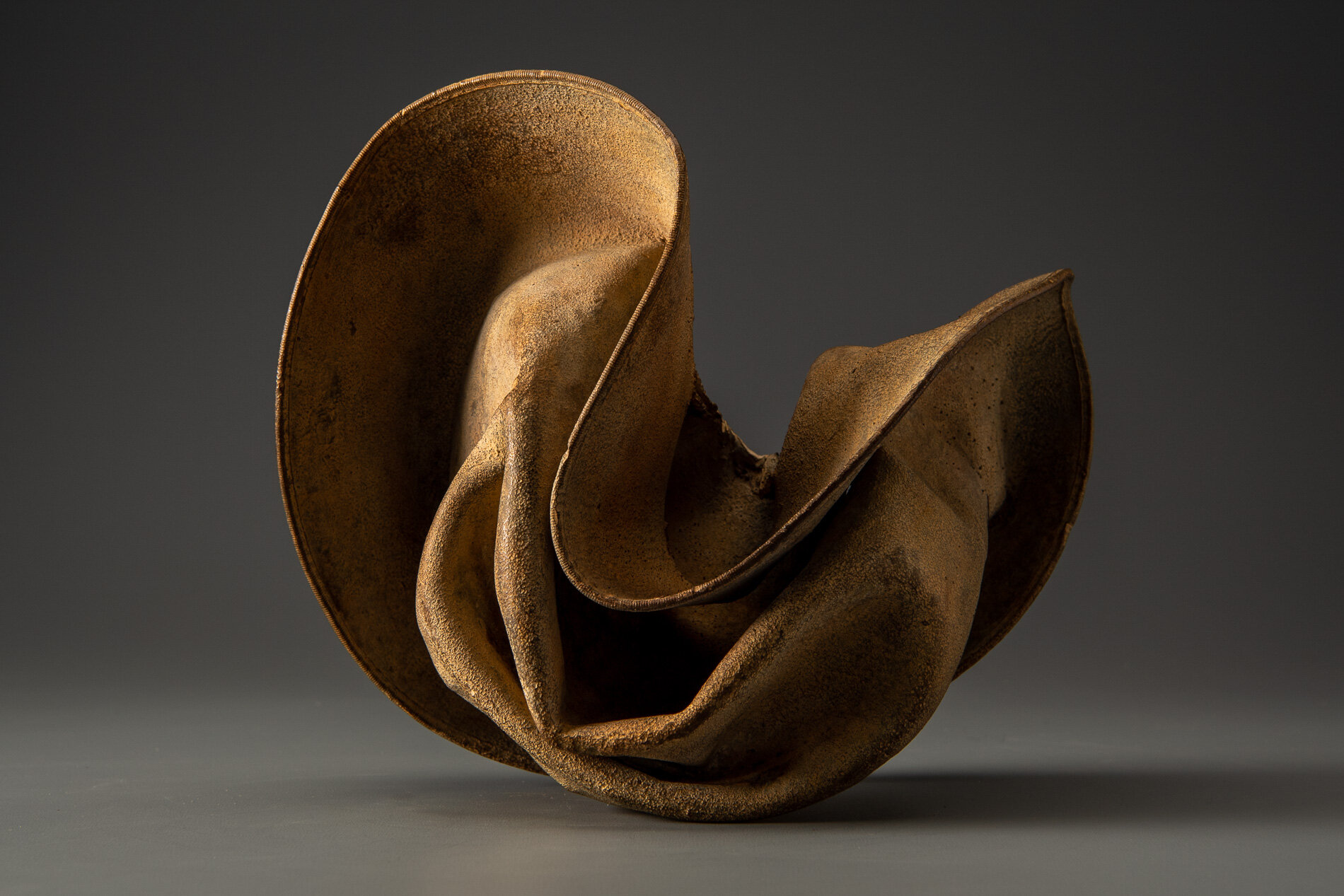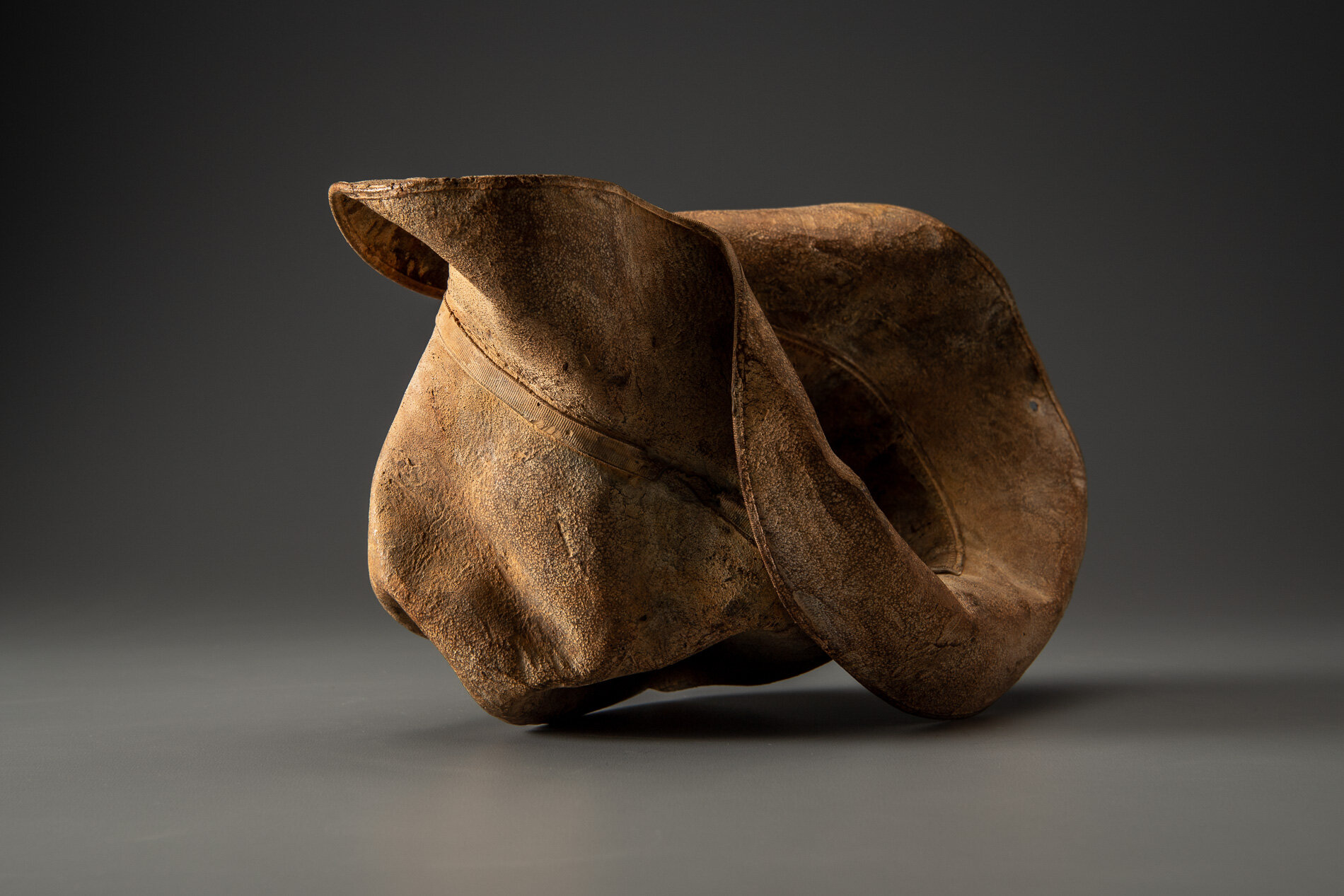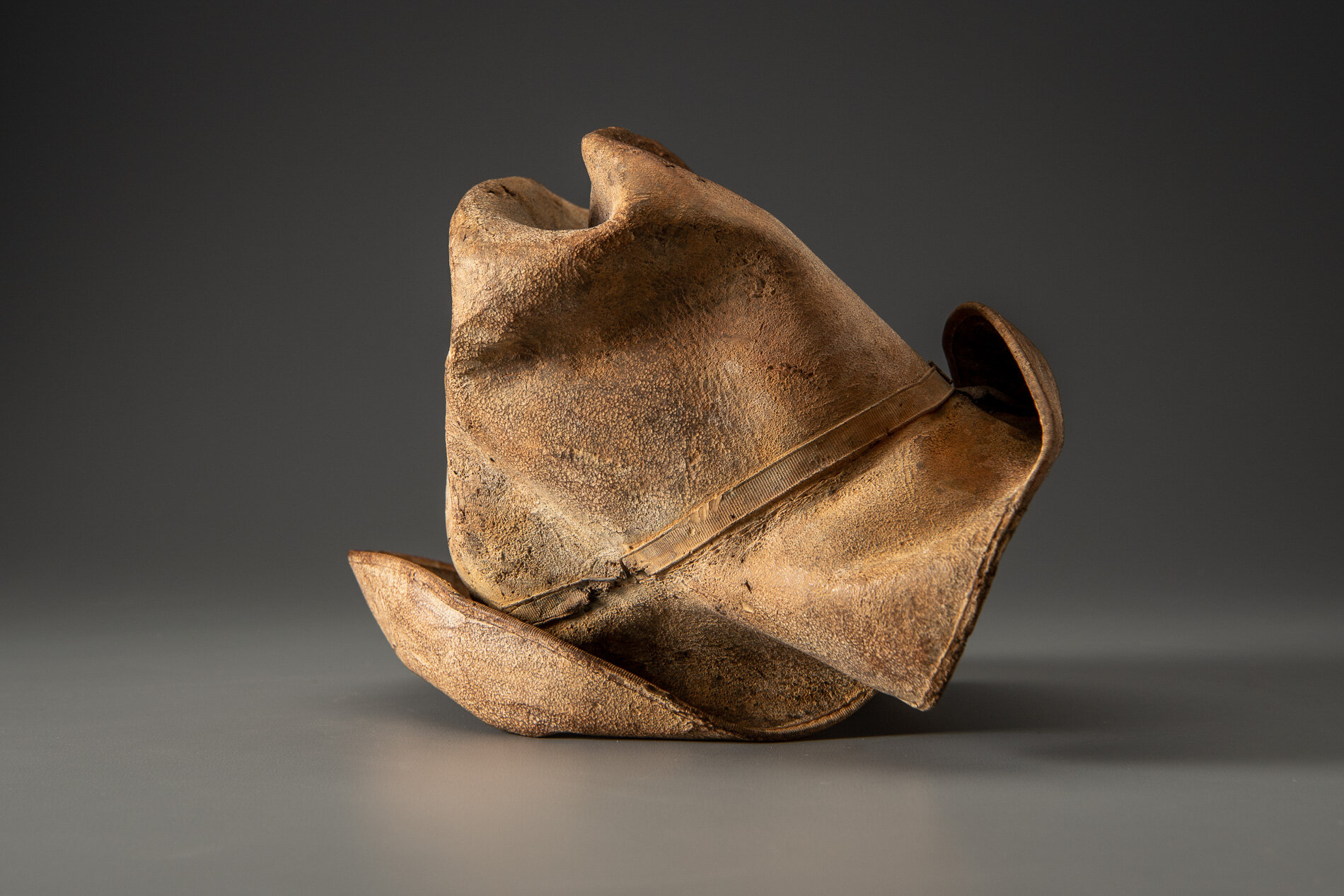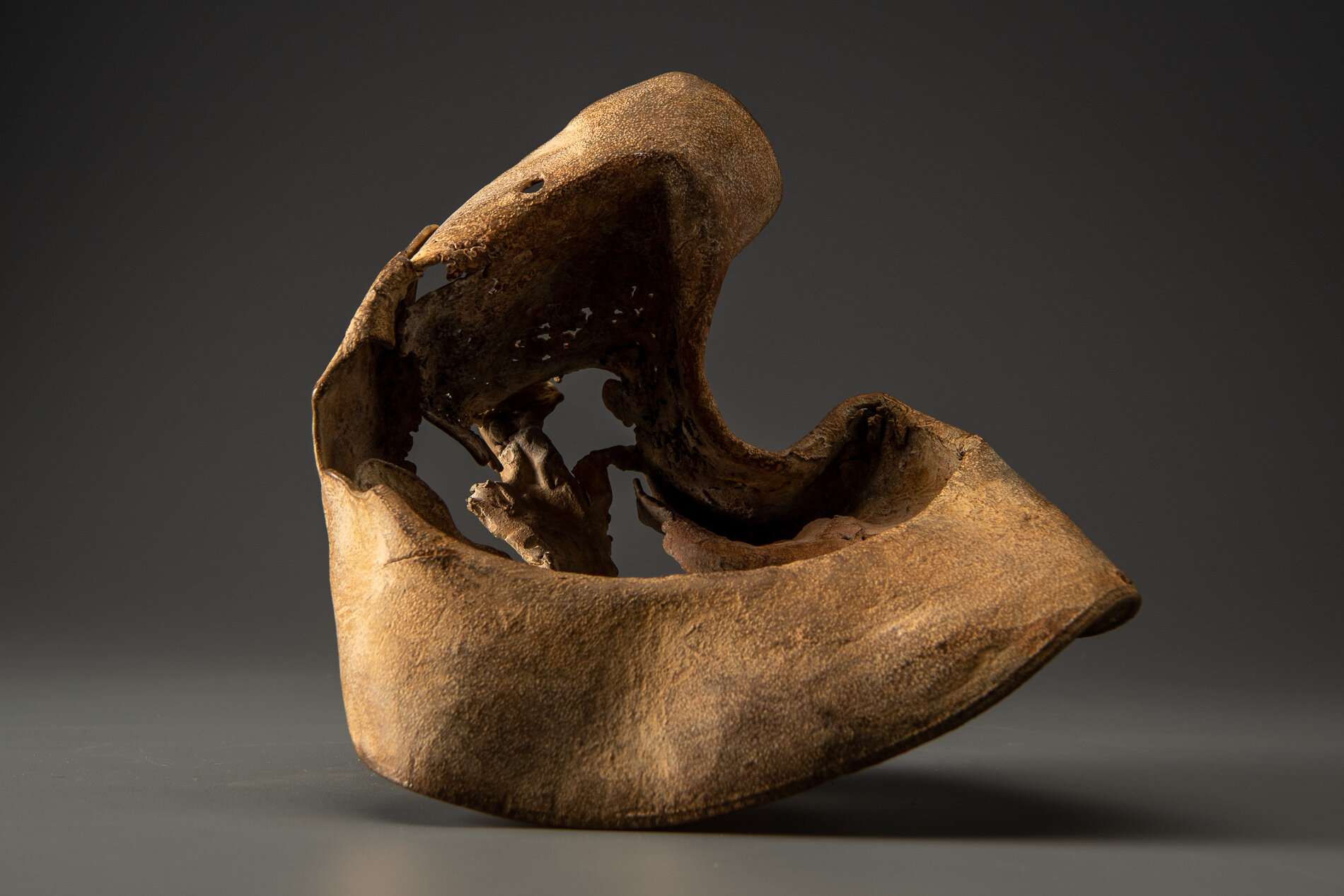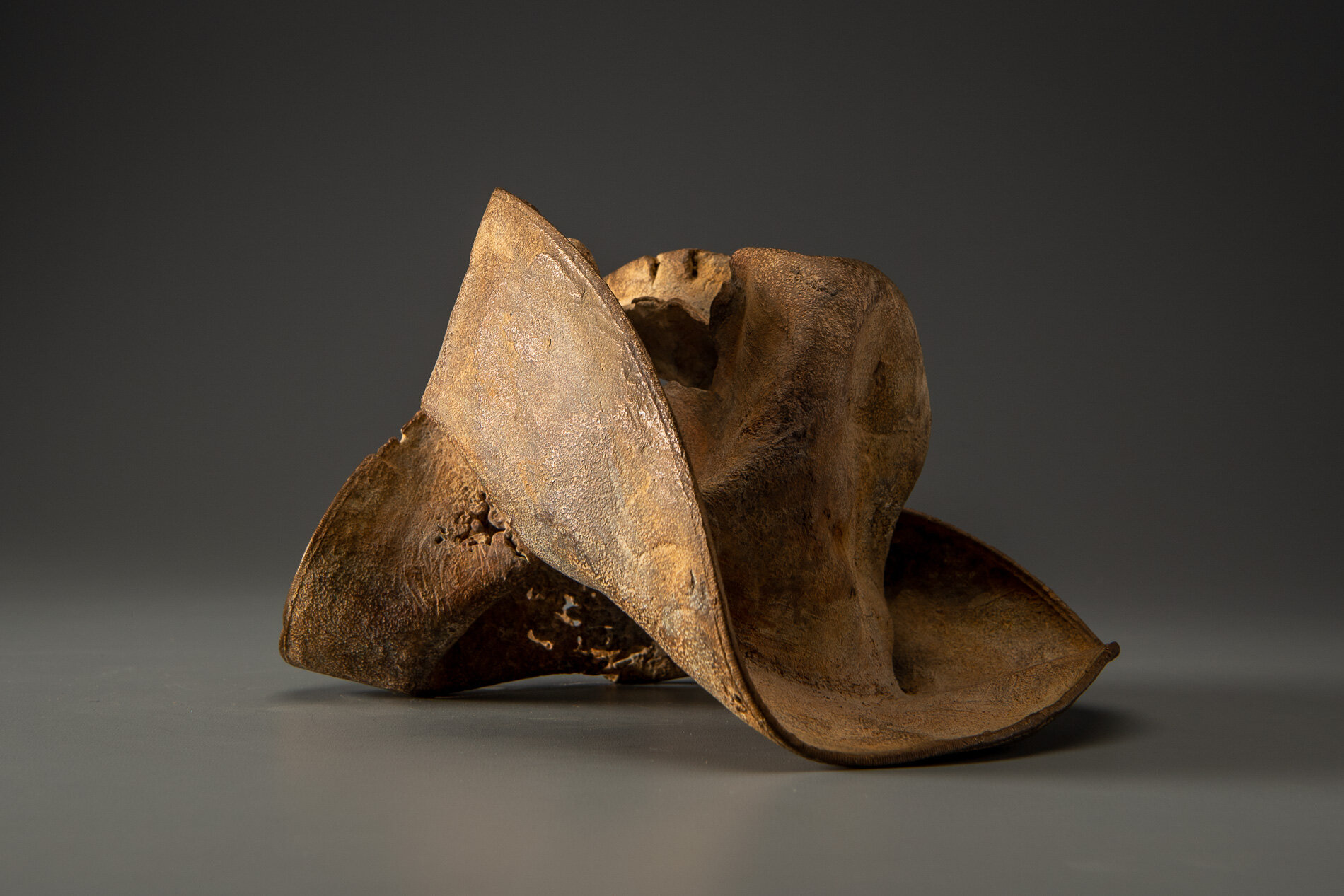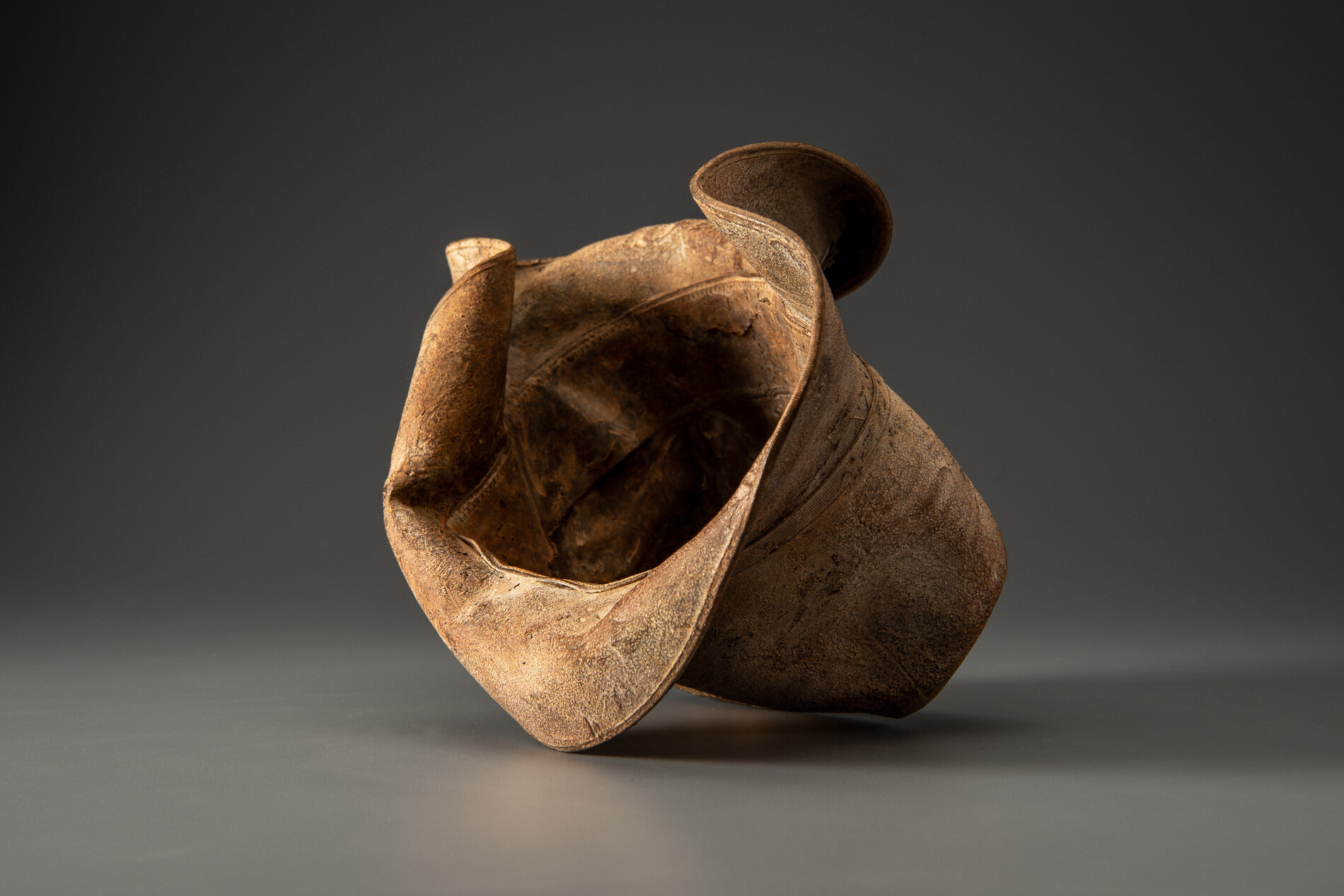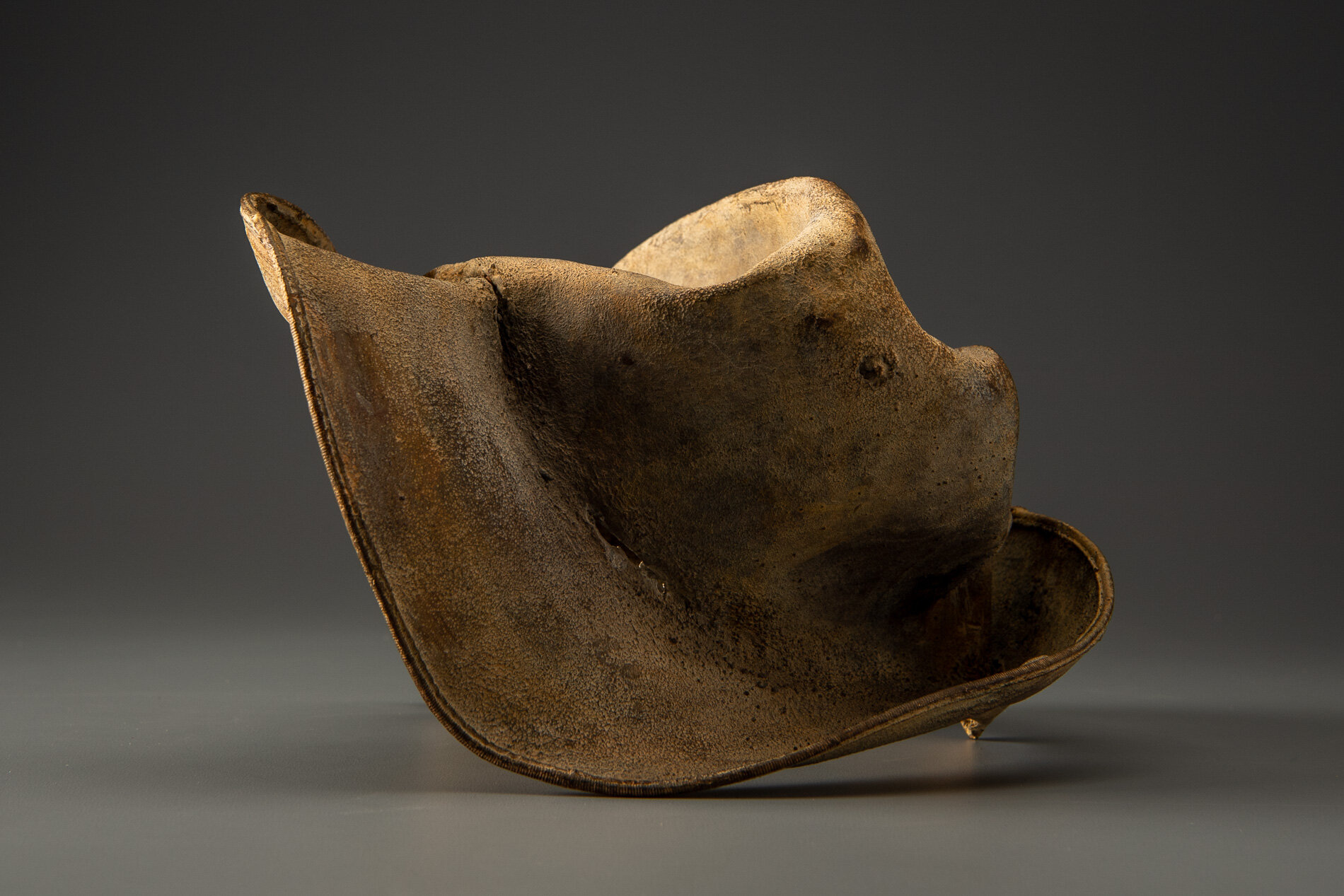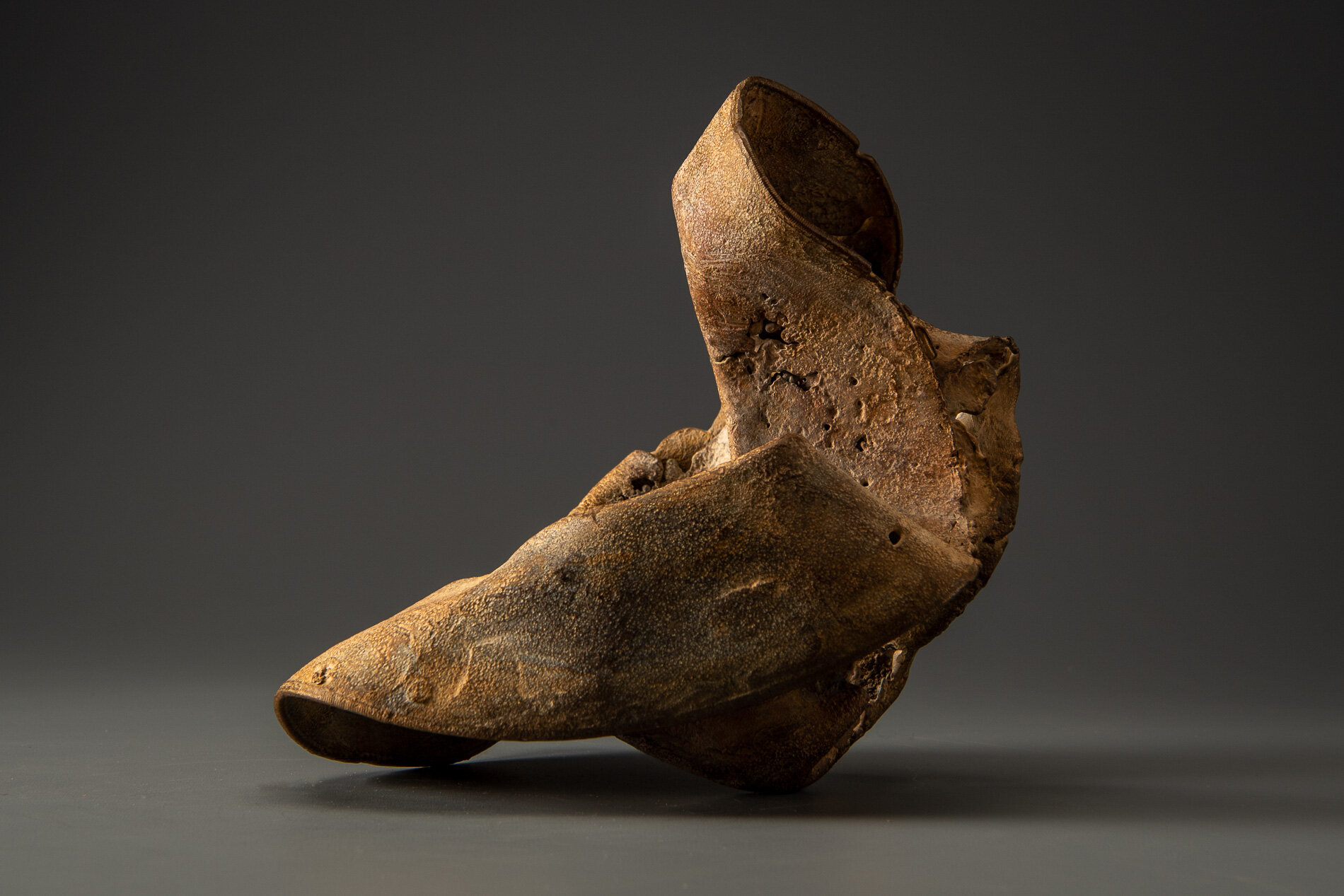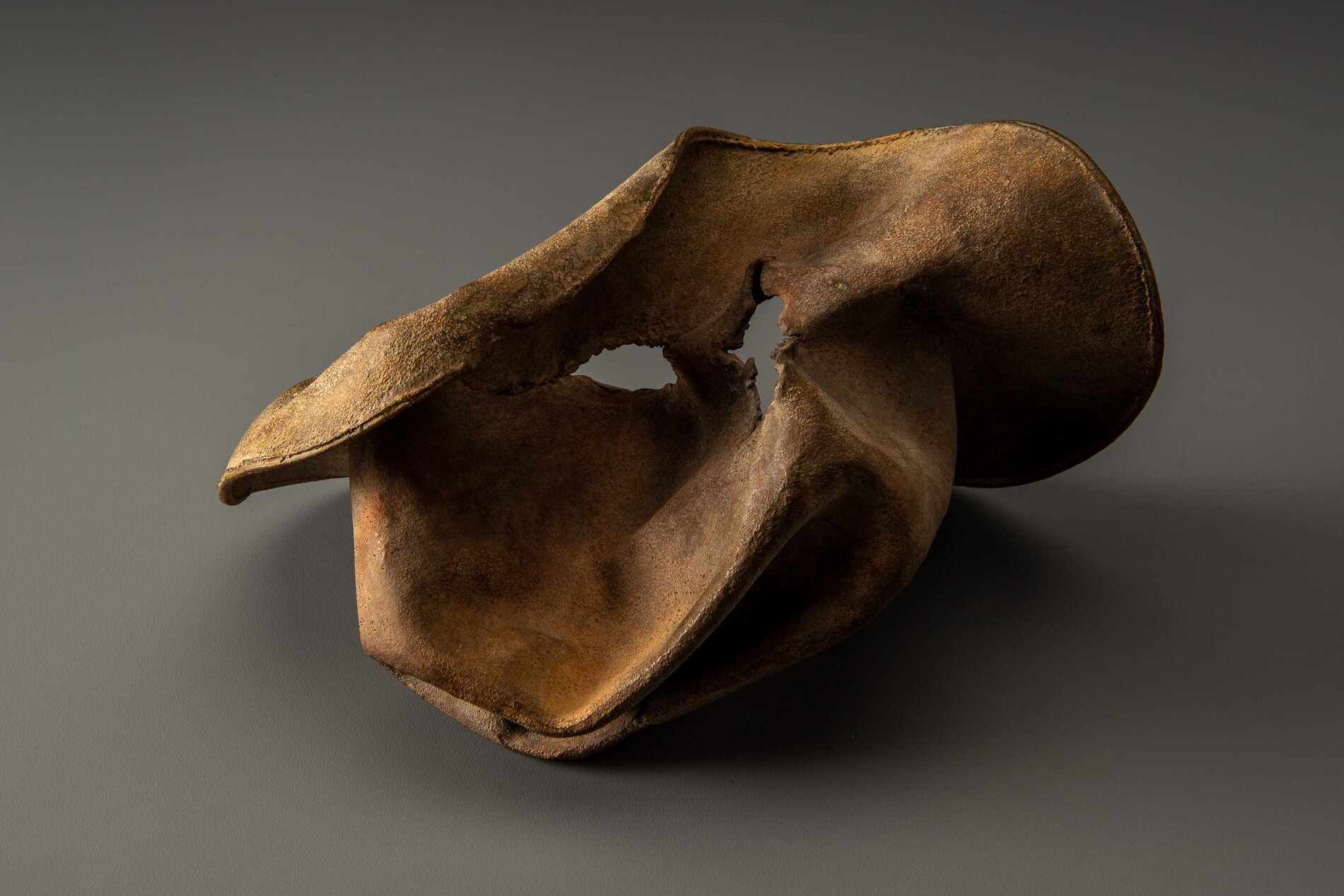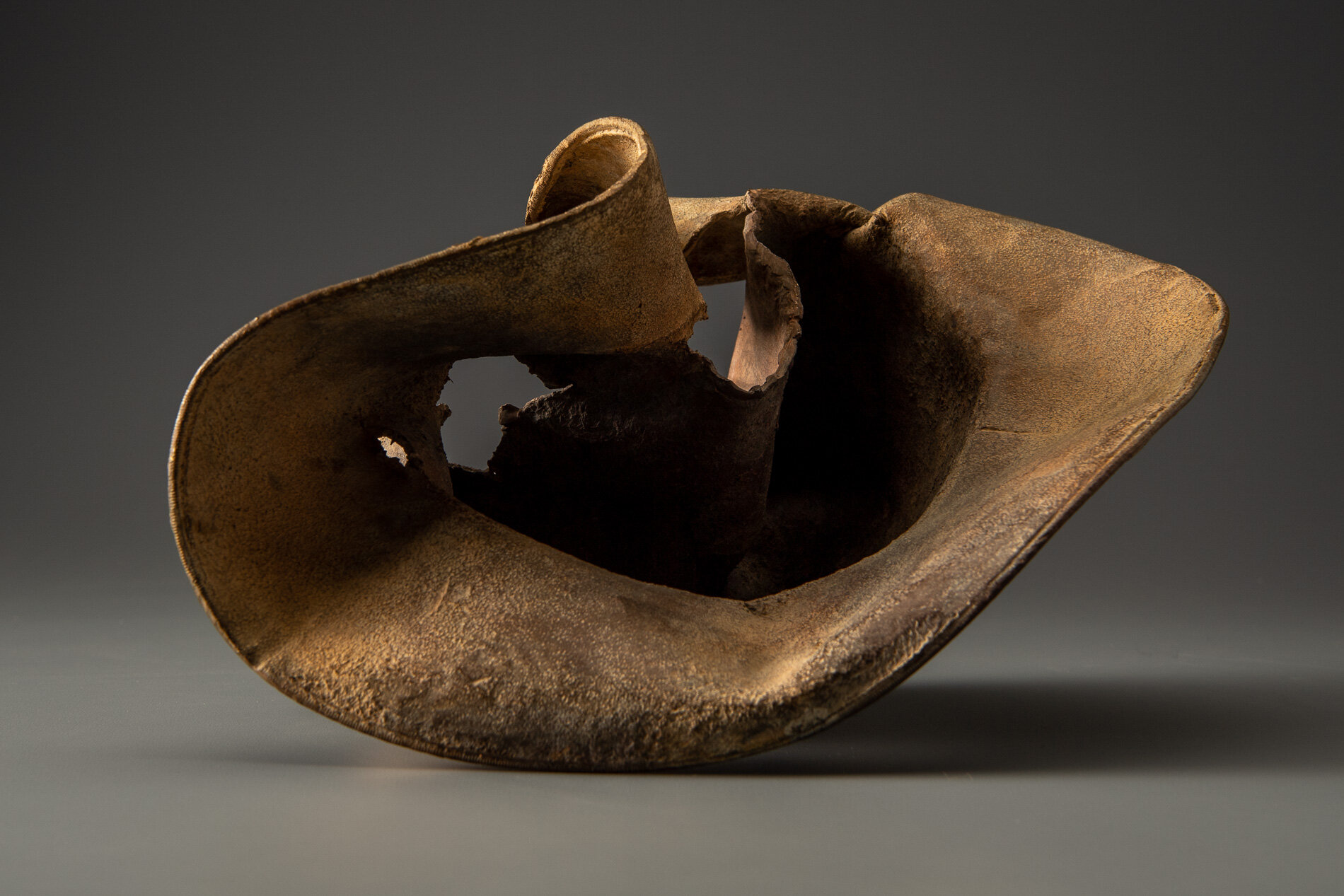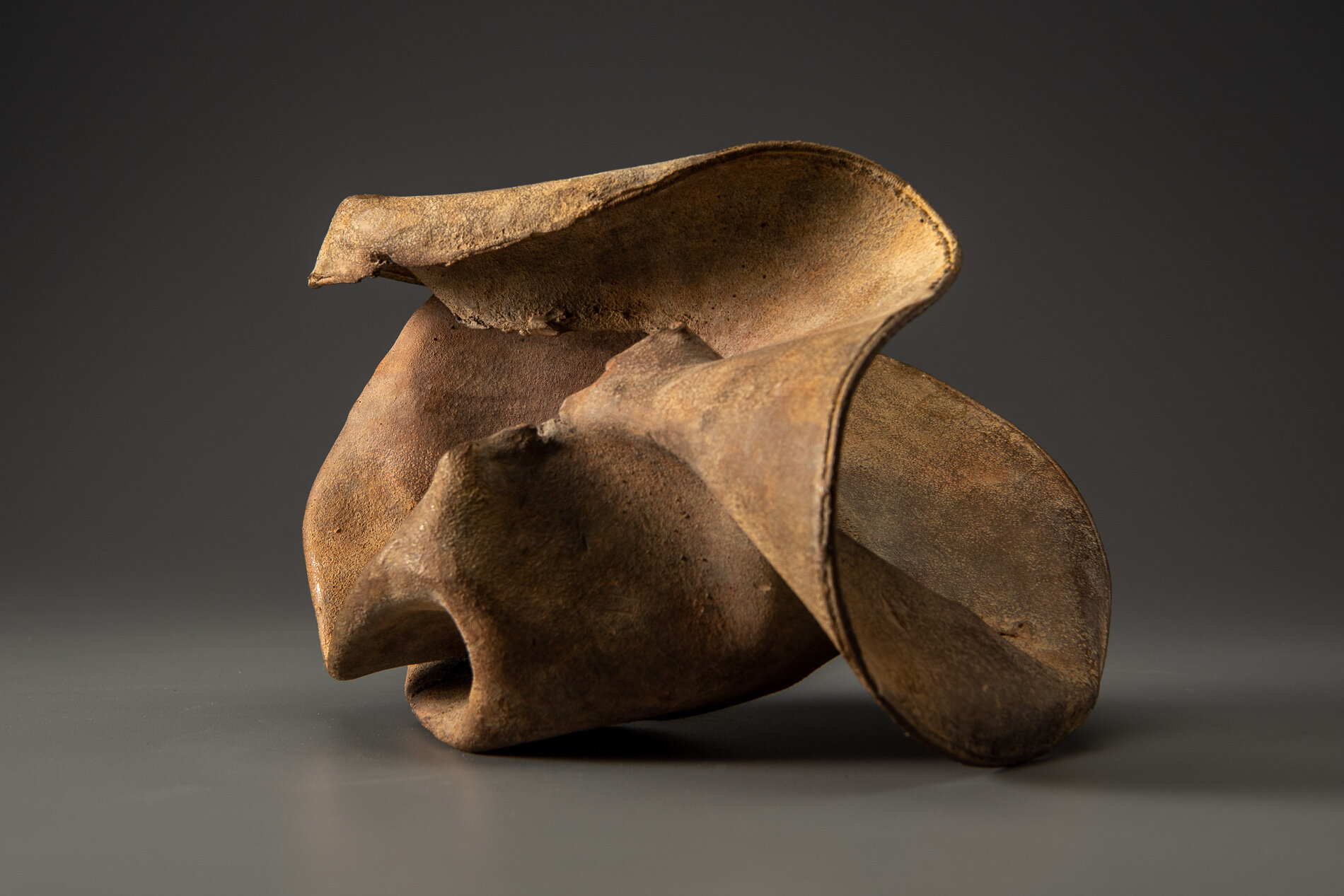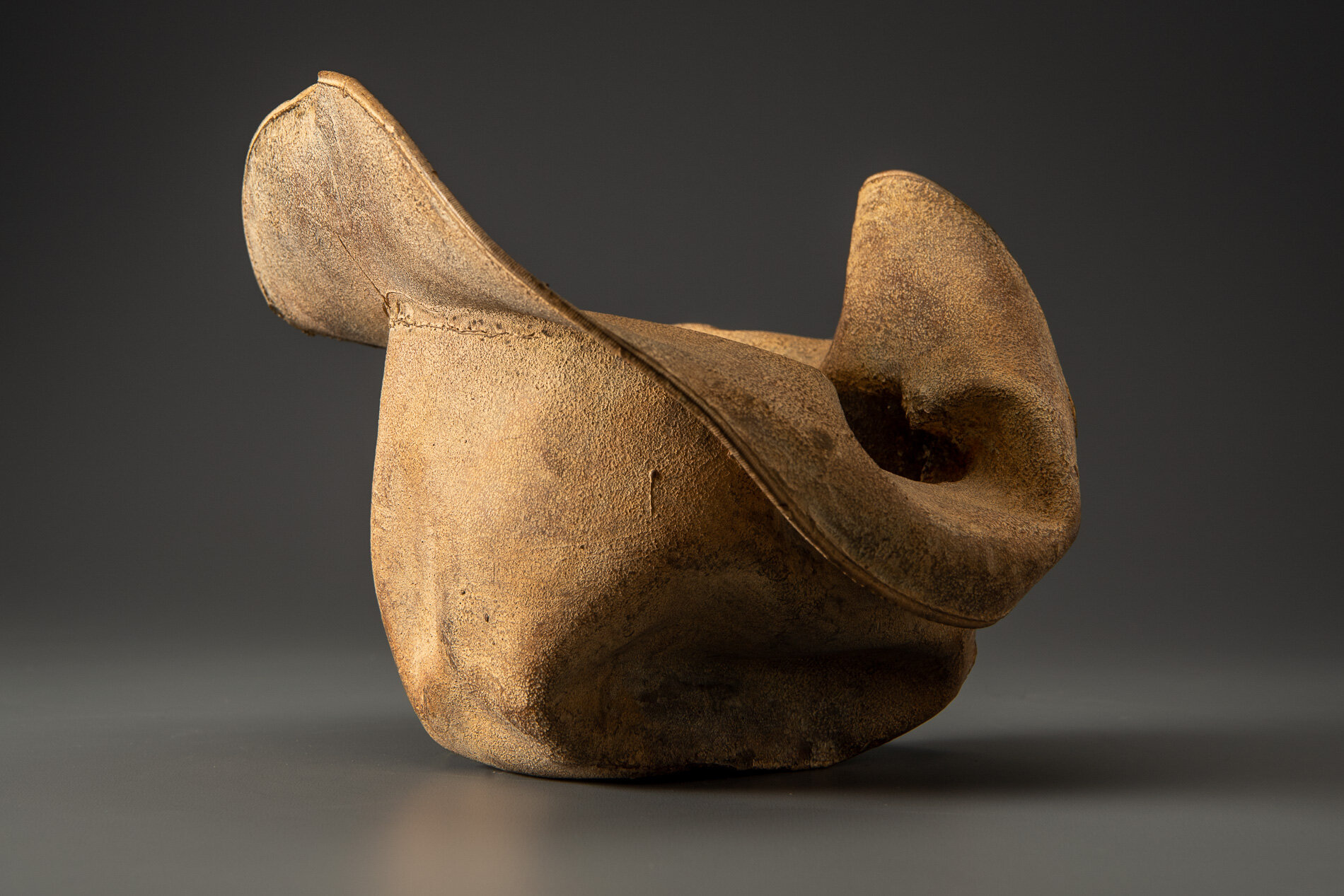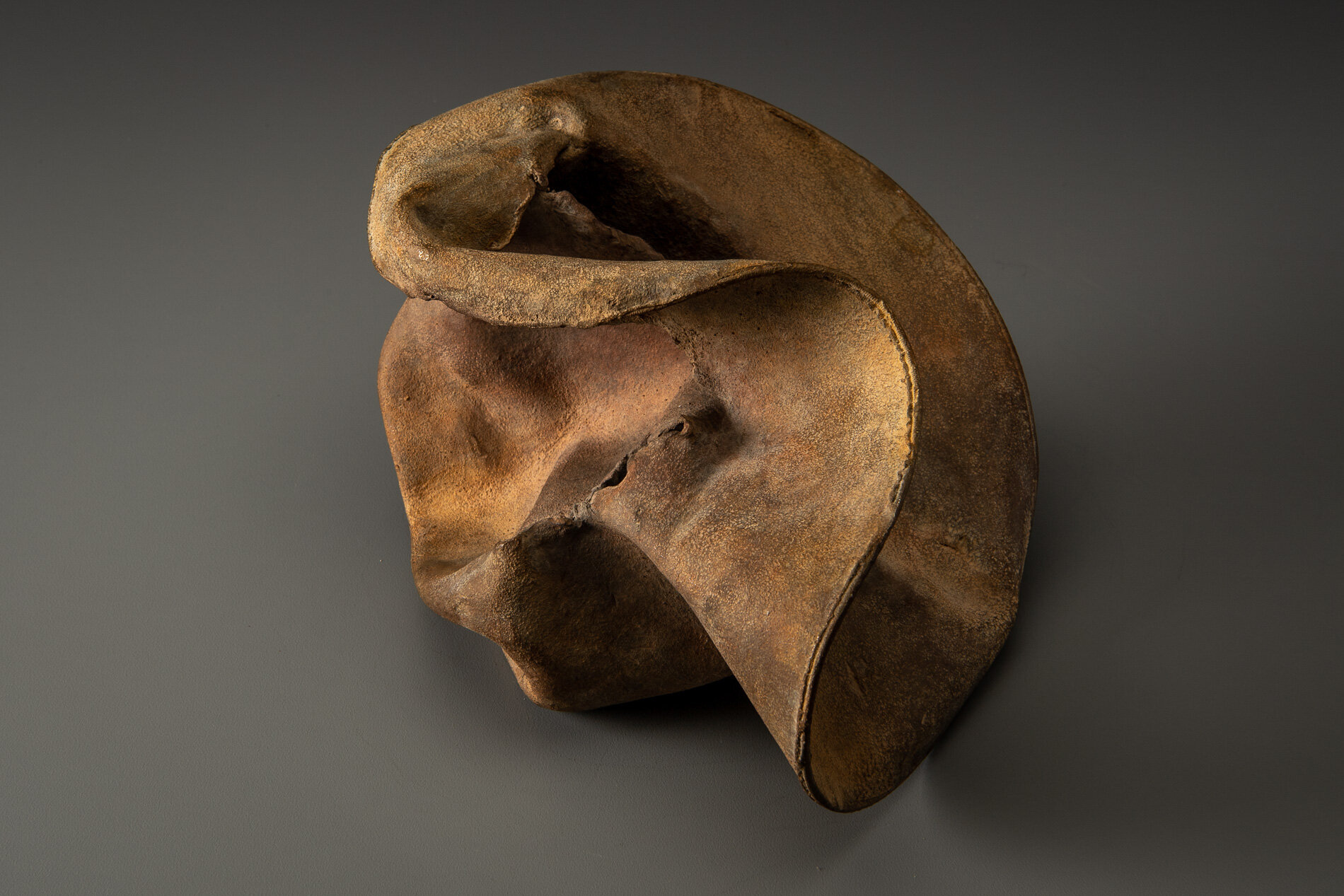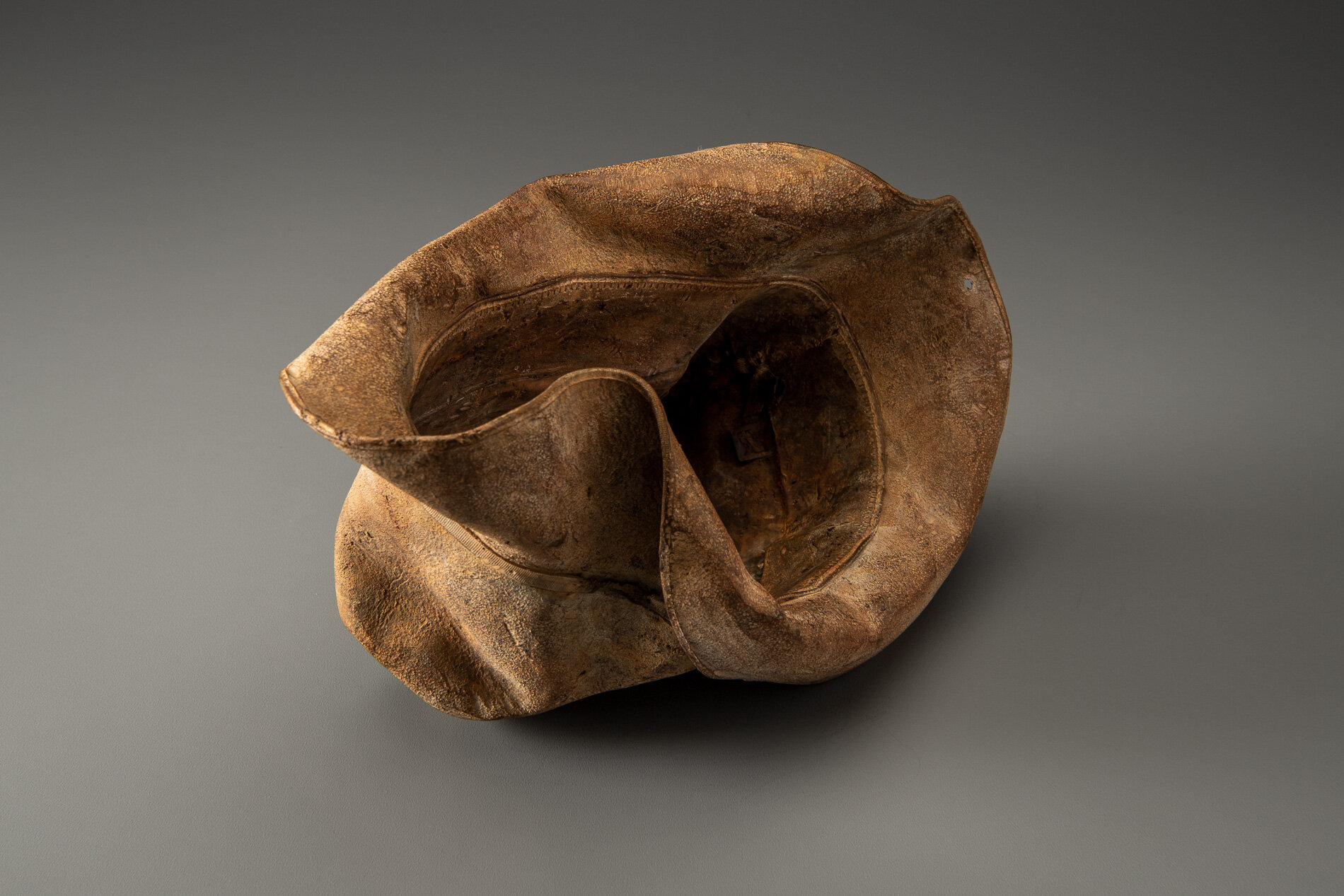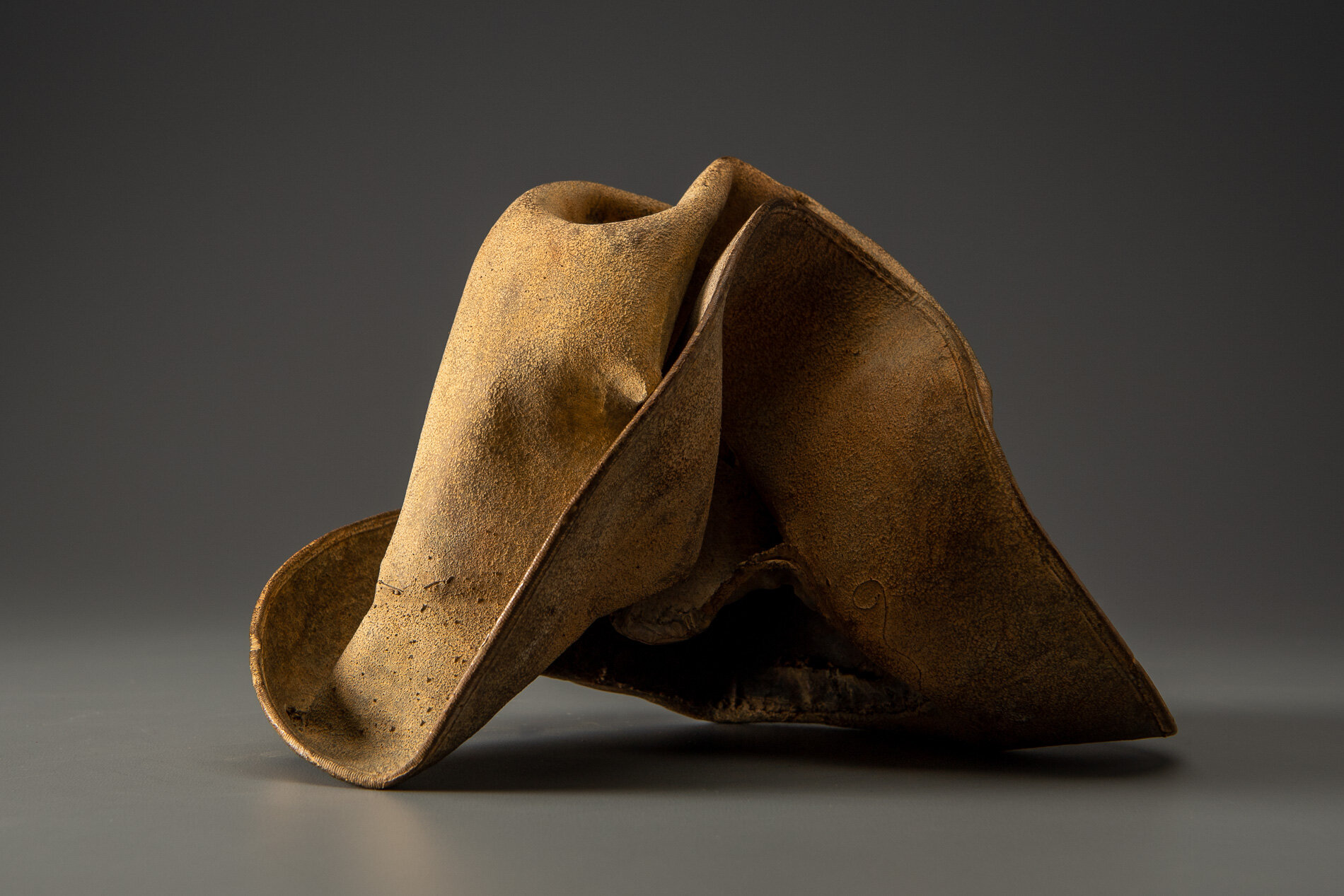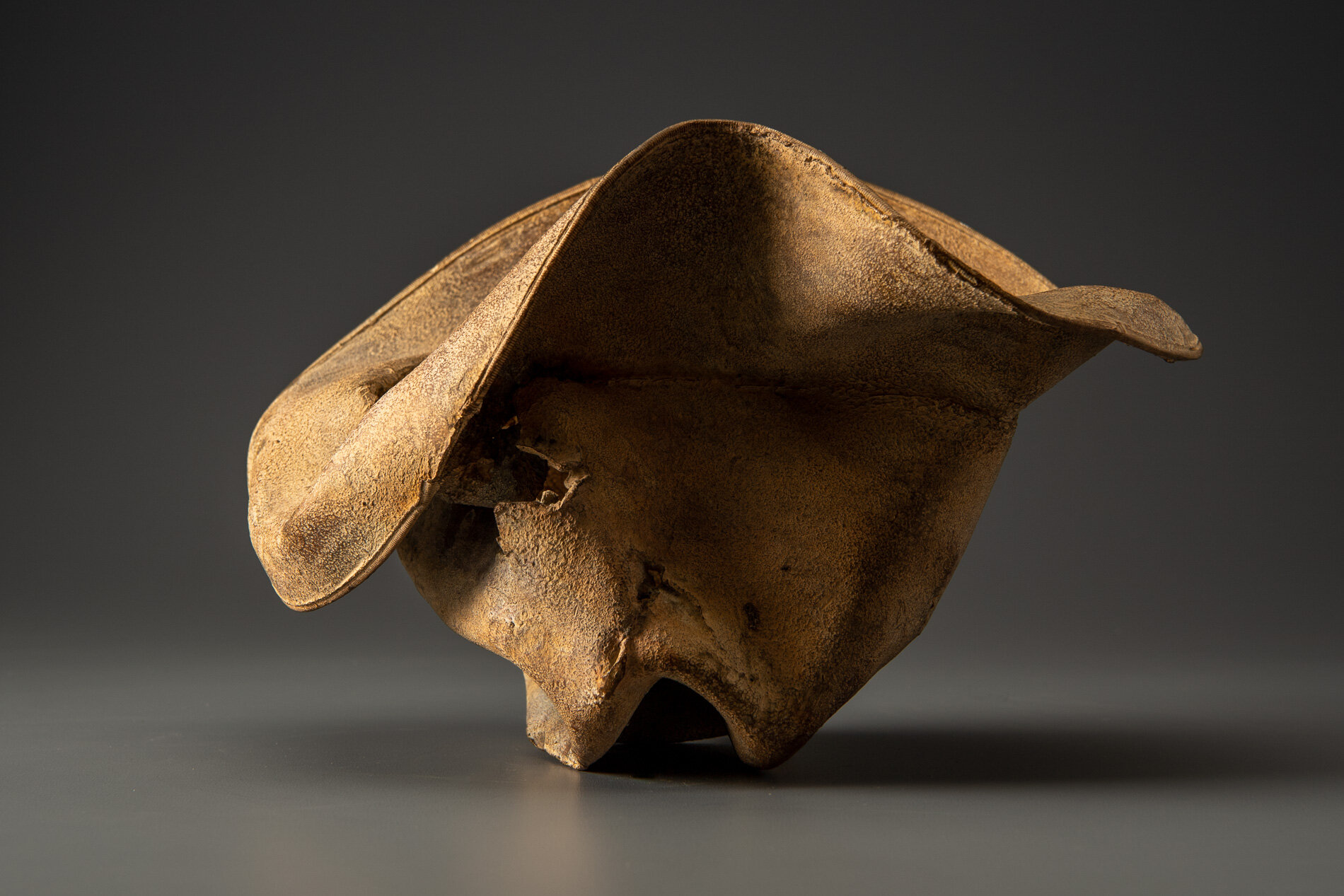2022-2020

ECO—SYSTEMS
18” X 4.5” X 10”
financial gain and passed butterflies.
Image by Nash Baker
With Eco—systems, I propose building a relationship between financial gain and the planet Earth’s living systems.
Applying systems thinking to my work, I realize that profit is the fuel to change society's landscape practices to embrace the planet's ecological systems on the Gulf Coast. Applying economics and industrial concepts to my work, I propose that ecotourism is an untapped resource that can strengthen our environmental and economic health.
Through fostering symbiotic relationships that regenerate Houston's micro-ecosystems, we will move our reputation from Chemical Plants to Native Plants — we can prosper as the Green Energy City. — Symbiosis Celebration.
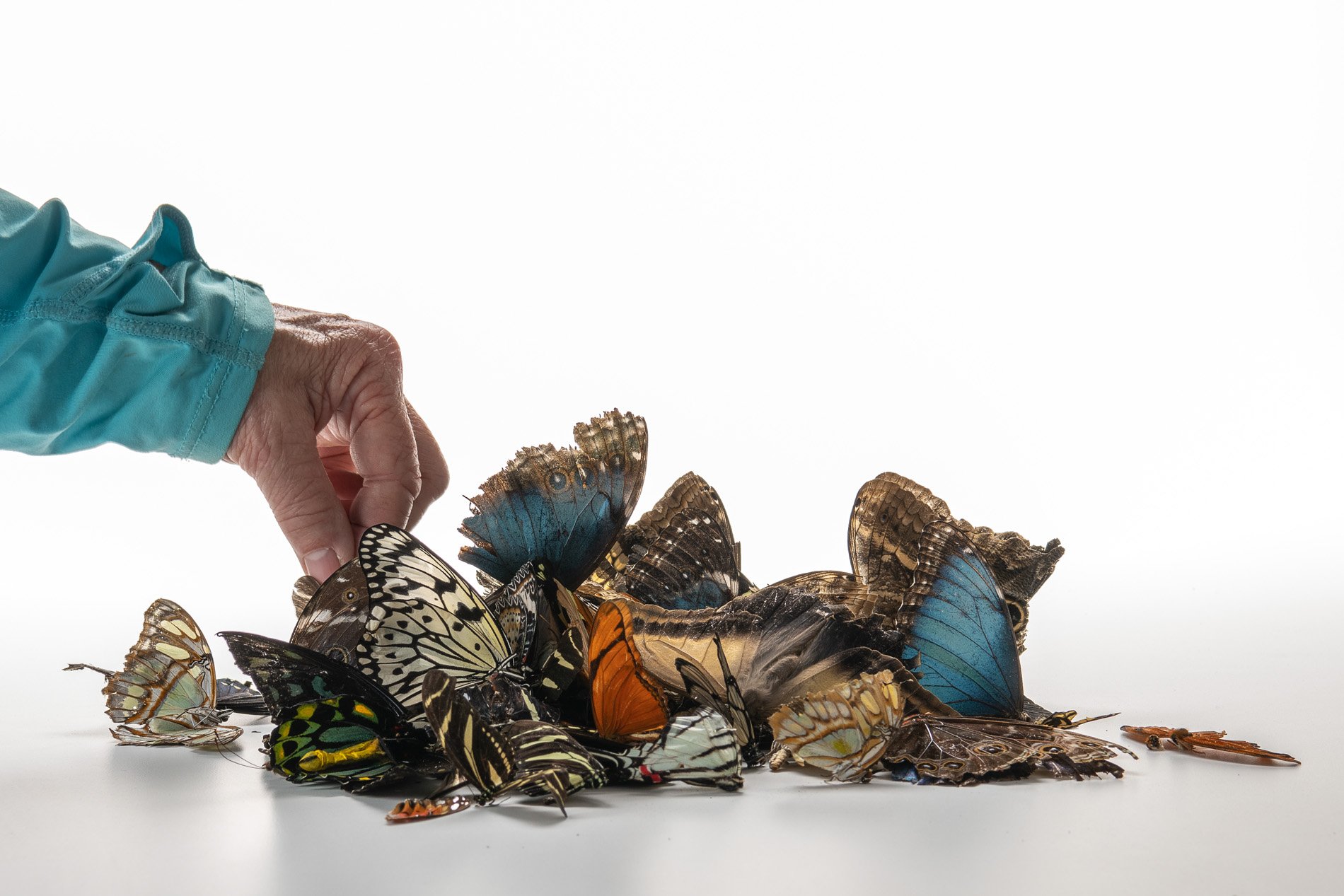
SMALL ACTS
10” X 10”
passed butterflies, human species
Image by Nash Baker
Our past actions formed the precarious state of our environment. What we do today shapes our future. This piece suggests a caring and protective relationship between natural systems and urban development has extraordinary potential. I believe the human species has the creative capability to make our cities lush and diverse carbon sinks.
This work is a call to action. Your future is today.

FALL
10” X 10” X 10”
passed butterflies
image by Nash Baker
The North Eastern United States celebrates and capitalizes on Autumn’s falling leaves. On the Gulf Coast, we have an opportunity to build a relationship with our natural history and celebrate Autumn and Spring migrations. — Symbiosis Celebration

TIPPING POINT
31" X 29" X 36.5"
bronze found object rebar and concrete.
Image by Nash Baker
Coastal ecosystems are dynamic. They are used by many different people, industries, and species. This puts them at high risk of tipping.
Located on the far east side of Texas, Houston is an important migratory pathway and covers 600 square miles of what once was the coastal prairie. One of the most biodiverse ecosystems in the US, less than 1% of this prairie system remains. Houston, projected to double in size by 2050, plays an impactful role in the continent's natural systems that once protected and nurtured the region's ecology, soaked up rainwater, cooled the planet, and stored carbon. Due to its location, Houston's landscape practices impact life on land and in the waters throughout the Americas. In August 2017, Houston received almost 52 inches of rain in a matter of days. Unfortunately, with the city’s current landscape practices and policies, Houston's rainwater no longer soaks into its soil, and its insects, flowers, birds, and the Gulf coral reefs are disappearing.
I believe our cities can incorporate policies to properly manage our landscapes to protect and balance these financial and natural ecosystems. — Symbiosis Celebration

PLANET POPSICLES II
6” X 1” X 12” ephemeral
Sticks, H20, Passionflower, Fall obedient plant, and American Beautyberry

PLANET POPSICLES
6” X 6” X 24” ephemeral
Sticks, H20, Passionflower, Fall obedient plant, American Beautyberry, Beatles, Pokeweed, Scarabs, Golden Rod, passed butterflies and passed moths
image by Nash Baker

ROOST
42” X 29” X 36.5”
roots and dried plants
Image by Nash Baker

Carbon by the Yard
Zoysia Turfgrass relief
35' X 47'
Embedded within the installation Symbiosis, Carbon by the Yard is a temporary, living sculpture in the shape of the Carbon element symbol, C. The work consists of carving a 16 x 14-foot shape into the existing grass and allowing the Zoysia grass to grow tall around it. A simple gesture, the letter brings attention to the role lawn-grass plays in climate change. In 2020, the Environmental Protection Agency estimated that grass uses up about a third of all public water: in the US, this translates to 9 billion gallons of water every day. And, manicured lawns provide no livable habitats for pollinators or the other plants and animals necessary to maintain a healthy ecosystem. With Carbon by the Yard, artist-environmentalist Cindee Klement brings attention to the ways in which our daily decisions can help to reduce our carbon footprints.

CHANGE
40" X 29" X 55"
steel, reinforced concrete, wire and coins
image by N. Baker
CHANGE
As society changes, the meaning of sculptures that address social issues can also change. In 2018 I created Broken for a small exhibition at the MFAH Glassell School Of Art. It addressed society's ability to turn a blind eye to the suffering of its most vulnerable. I was told the piece was uncomfortable to look at. In 2022 I was invited to exhibit it in Downtown Houston in a group exhibit composed of artists that reflected the city's diverse demographics. Around the piece in this space, I surround the man’s cup with change. I watched the exhibition visitors look at the piece. Some adults and several children picked up the change and put it in his cup. Seeing the piece through the lens of 2022, the piece including change addresses the rise of social justice and compassion that rose during covid spring of 2020.

water + air + citizens
14” X 6” X 6”
Found objects — a glass jar and cork lid, shale, charcoal, mesh, distilled water, Springtails, a Monarch carcass, living soil, Horseherb (Calyptocarpus vialis), Bigfoot Waterclover Marsilea macropoda, two chrysalides, two oyster shells, and a bird skeleton.
I documented the event by having the participants take a small step as a community to build a healthy functioning ecosystem collectively. Earth's water system is a closed water system. Although we can make soil, we cannot make more water.
As a symbolic gesture before the discussions began, each person added an element to provide the future with a water system to sustain life on Earth. The objects in the documentation are found objects — a glass jar and cork lid, shale, charcoal, mesh, distilled water, springtails to eat the fungus, and a Monarch carcass to envision the future. Sourced from Symbiosis, the piece includes living soil, Horseherb (Calyptocarpus vialis), Bigfoot Waterclover Marsilea macropoda, two chrysalides, two oyster shells, decaying plant matter and a bird skeleton.
After the event, I added elements present in earthly healthy ecosystems; the bird skeleton I found in Symbiosis last spring, two chrysalides vacated by butterflies and left on Lawndale's fence, a dried lemon bee balm bloom, and lastly, a past Monarch butterfly. Monarchs were not witnessed in Symbiosis' first year. I found this Monarch on the sidewalk of my neighborhood. To recover endangered species, we envision them in our terrain, provide habitat and plants that give them nectar. I placed the terrarium on two broken concrete pavers. As an urban community, we successfully built an ecosystem where our actions support natural systems that temper weather and provide clean water and air.
In 2021 I proposed to Lawndale a social Sculpture that addresses the three ways humans intersect soil in Houston. The way we treat our soil impacts two ingredients necessary to sustain life on Earth, water and air.
Public policy, Design industry, and Art activism.
Water + Air + Citizens is a discussion that looks at three ways Houstonians (humanity) impact these natural systems through urban landscapes.
Medians, yards, gardens, lots, parks, blocks are all surfaces of Earth. But, by any name, the skin of our planet purifies its water and regulates its atmosphere.
As the event grew close, I began to see a bigger picture, another layer to the work. In my sculpture practice, this is a common occurrence. In this case, I became aware that the title I chose for the sculpture is three of the most potent elements in weather. First, with water, we have floods and hurricanes. We are hit with hurricanes, tornadoes, and dust bowls in the air. Finally, citizens' power of public opinion is a tremendous force and often overcomes the common sense of individuals and leaders.

MOMENTOS
36” X 24” X 24”
photo by nash baker
A collection of keepsakes from the first twelve months of reimagining Lawndale Art Center’s garden to holistically support urban wildlife. These things were unearthed, homeless, found, gifted, dried, traped, stacked, planted, recorded and closed the year.
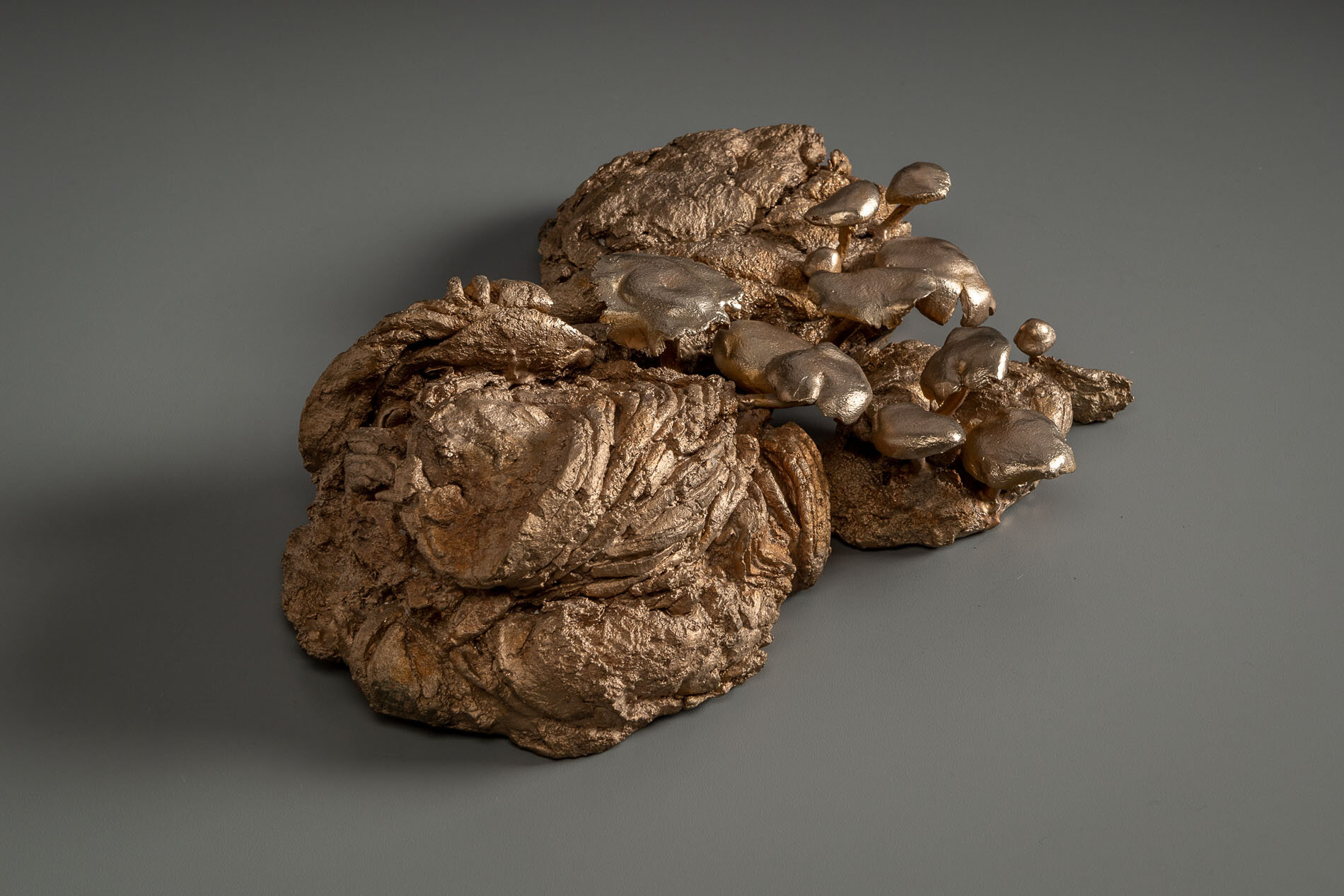
Working title - SOIL BIOLOGY
varies
Photo by Nash Baker .
Artist statement is under construction

ROOT TO WATER
12” X 18” X 12”
found objects: rusted steel irrigation wheel, root
photo by Nash Baker
“How fleeting are the wishes and efforts of man! how short his time! and consequently how poor will his products be, compared with those accumulated by Nature during whole geological periods.”
—Charles Darwin, Origin of the Species
Root to Water offers hope. The root, placed with the root system up, takes on anthropomorphic characteristics, as the widespread irrigation wheel’s legs are firmly grounded, the humanized root’s bent over posture and downward-pointing arm are alive with discovery, the root’s hair like tendrils are actively rewiring its human anthropomorphic brain. This rewiring is happening across the globe, in the most desolate of landscapes citizen conservationists are studying natural law and finding solutions to their man-made problems.
In Root to Water, the irrigation wheel symbolizes mechanistic systems. The root in its natural state represents ecological systems. With this duo, I propose that modern civilization has reached an advanced stage of industrialization. In order to progress to the next stage of civilization we must heed Darwin’s observation, and answer the question how do we pair mechanical innovation with the systems that have functioned through “whole geological periods.” I placed the root above the wheel supporting Darwin’s view of natural systems superiority to human innovation.
Repurposing two tools from agronomy, Root to Water shifts how we see mechanical systems versus naturally occurring systems. In this sculpture, a modern innovation—a rusting, decorative, human-made irrigation wheel—serves as a pedestal for an organic found object that often goes unseen: a root system. With this pairing, I exhibit man’s historical struggle to transition to an agricultural-based society utilizing human-made innovations that extract natural resources instead of harnessing existing ecological systems that regenerate resources.
Communities across the planet are experiencing extreme cases of natural disasters. Houston has experienced three 500-year floods in three years. The U.S. Army Corps of Engineers completed the Buffalo Bayou and Tributaries Resiliency Study, proposing options for controlling floodwaters costing up to $12 billion. The report does not include conveyance options that are local nature-based cost-effective solutions.
A growing number of conservationists are using natural systems, specifically roots, as a tool for water transportation, carbon sequestration and as a means to cool the planet. Meanwhile, industrial agricultural produces products that are depleting the organic matter, releasing carbon from the soil, and contributing to global warming. As evidence consider, “Each 1 percent increase in soil organic matter helps soil hold 20,000 gallons more water per acre.” In contrast, industrial methods strip the soil (releasing carbon), use petroleum-based inputs to enrich the soil and kill pests. Root to Water elevates roots as a natural system that transports water, minerals and carbon; stabilizes soil; and is instrumental in cooling Earth’s surface—a live-able solution for global warming.
My research-based art looks at the natural history of living soil and how it can be used to restore natural resources that is not commonly understood. I champion natural solutions to environmental issues with a focus on urban landscapes. Root to Water is part of my Endangered Knowledge work, a body of work in progress.
“Though the problems of the world are increasingly complex, the solutions remain embarrassingly simple.”
Further Reading
-Judith D. Schwartz, The Reindeer Chronicles, Water in Plain Site, and Cows Will Save the Planet
-Kiss the Ground, Directed by Joshua and Rebecca Tickell, with Woody Harrelson
-Organic Matter Can Improve Your Soil's Water Holding Capacity
-The Loess Plateau was the, most highly erodible soil on earth”

GUST—keeping the soil covered
4” X 13.5” X 12”
bronze
photo by Nash Baker
Gust materialized out of the winds of West Texas. From my early childhood on an isolated cotton farm in Dell City, I have vivid memories of objects blowing across the fields, particularly my grandfather's Stetson Open Road hat. Woven in felt, every hat has a story and transports many conversations over the decades; these stories are shaped with memories and record beliefs... some eloquent, and some twisted. In generations past, in fable and in legend, hats sheltered spirits, veiled sorrows, represented people and their occupations, and defended against the elements. They are witnesses of varied pasts. When my grandfather passed, his hat landed on my coffee table.
To most artists, a Stetson is a stereotypical Texas symbol to be avoided. For me, using hats as a sculptural material unearthed my artistic voice and shaped my first environmental narrative. Cradled in my youthful memory, hats blew in strange, wonderful ways, spinning from a generation marked by my respect to balancing present responsibilities and fears. My innocence escaped the realization that the consuming wind was not a natural occurrence; it was, in fact, the result of the perfect storms of the 1930’s, the dirty '50s, the ‘70s, and the ‘80s dust bowls. Each storm inspired new government environmental policies and land management.
In 2017, I traveled to set my eyes on our old farm and experience the landscape of my youth. I saw vast, vacant fields of beige tilled with stillness, patched with acres of monocrops raised to feed animals in stockyards—it looked normal, but felt somehow wrong. Passively I noticed the cultivated rows were no longer on the same elevation as the dirt roads and cinder block house—the fields lay in recessed plots. Wind erosion, eighty plus years since Black Sunday—unimaginable. Visiting for Christmas in 2018, I heard my parents discuss the time they returned home to Dell City to find two feet of soil in the house, and the time my mother met an old rancher who remembered when the area was covered in grass as high as a horses’ belly. At 60 years of age, I realized for the first time that the wind which captured my childhood imagination and stole my grandfather’s hat was the dust bowl's lingering ghost: it was man-made. It was like a knock in the head, despite numerous “environmental” governmental agencies the industrial revolution has morphed into industrial agriculture practices. Food is grown as a commodity: the environmental impact and nutritional value are out-weighed by quantity and production time. This was not my first aha! moment concerning the status quo; I learned to question food production/marketing and modern medicine in 1996 when my husband became diabetic. In 2006, as a lone ranger in my beliefs on nutrition I committed to only eat grass-fed meat and organic whole foods. In 2013, a Ted Talk by Allan Savory linked my nutritional world to the desertification that left its imprint on my subconscious and gave new meaning to my work.
Gust (2020) consists of six cast bronze hats, each contorted by the winds of my imagination and the ill-conceived farming and governmental practices that prioritize the GNP before human nutrition and ecological function. The six hats represent the six principles of the regenerative agriculture revolution: eliminating tillage, maximizing crop biodiversity, keeping the soil covered, maintaining living roots year-round, integrating livestock to build soil microbes, and holistic management.
Gust arose in the desert and rests in Houston’s fields of green; these hats now witness the dawn of a new agro-environmental awareness.

GUST—integrating livestock to build soil microbes
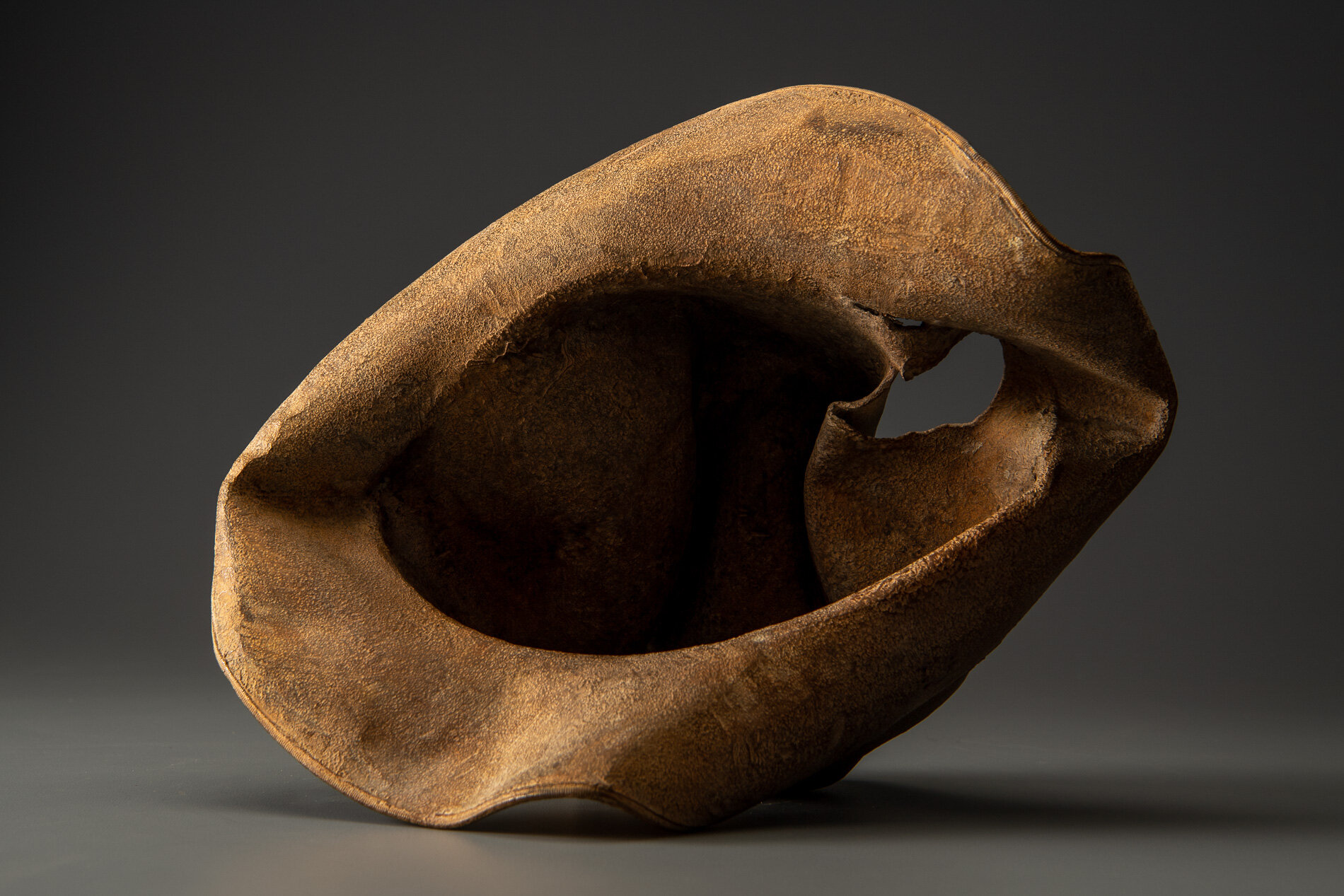
GUST—maintaining living roots year-round
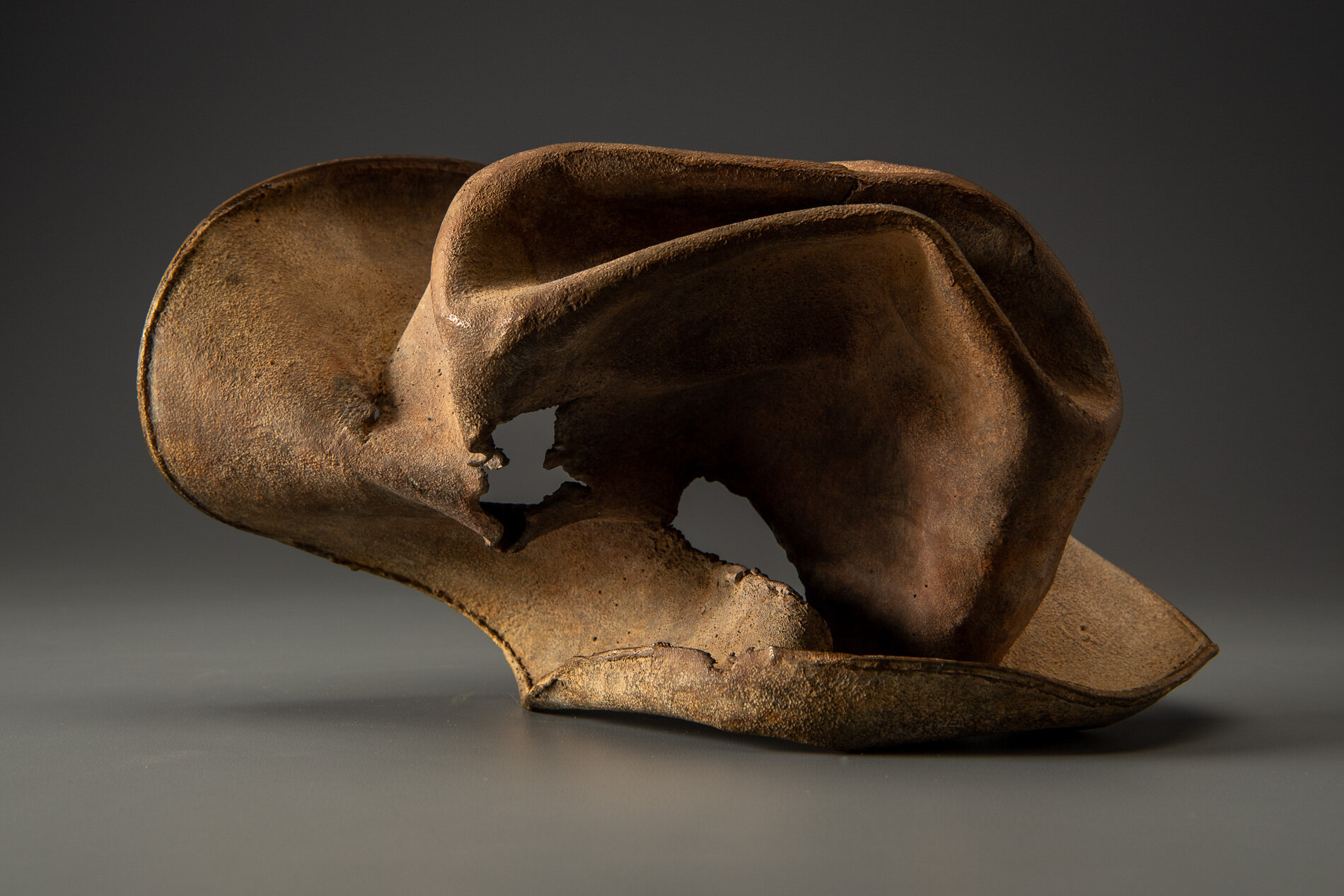
GUST—eliminating tillage
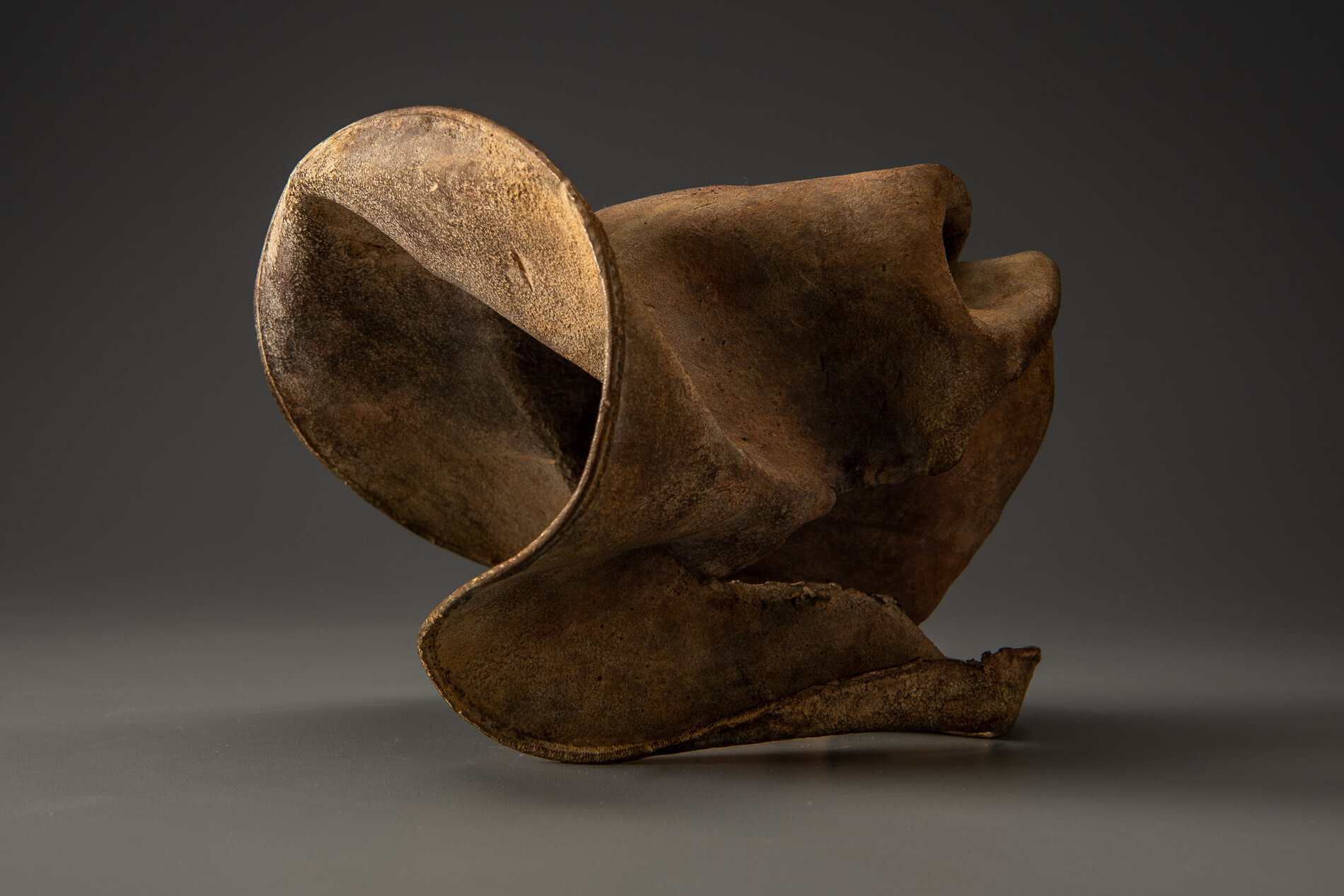
GUST—maximizing crop biodiversity
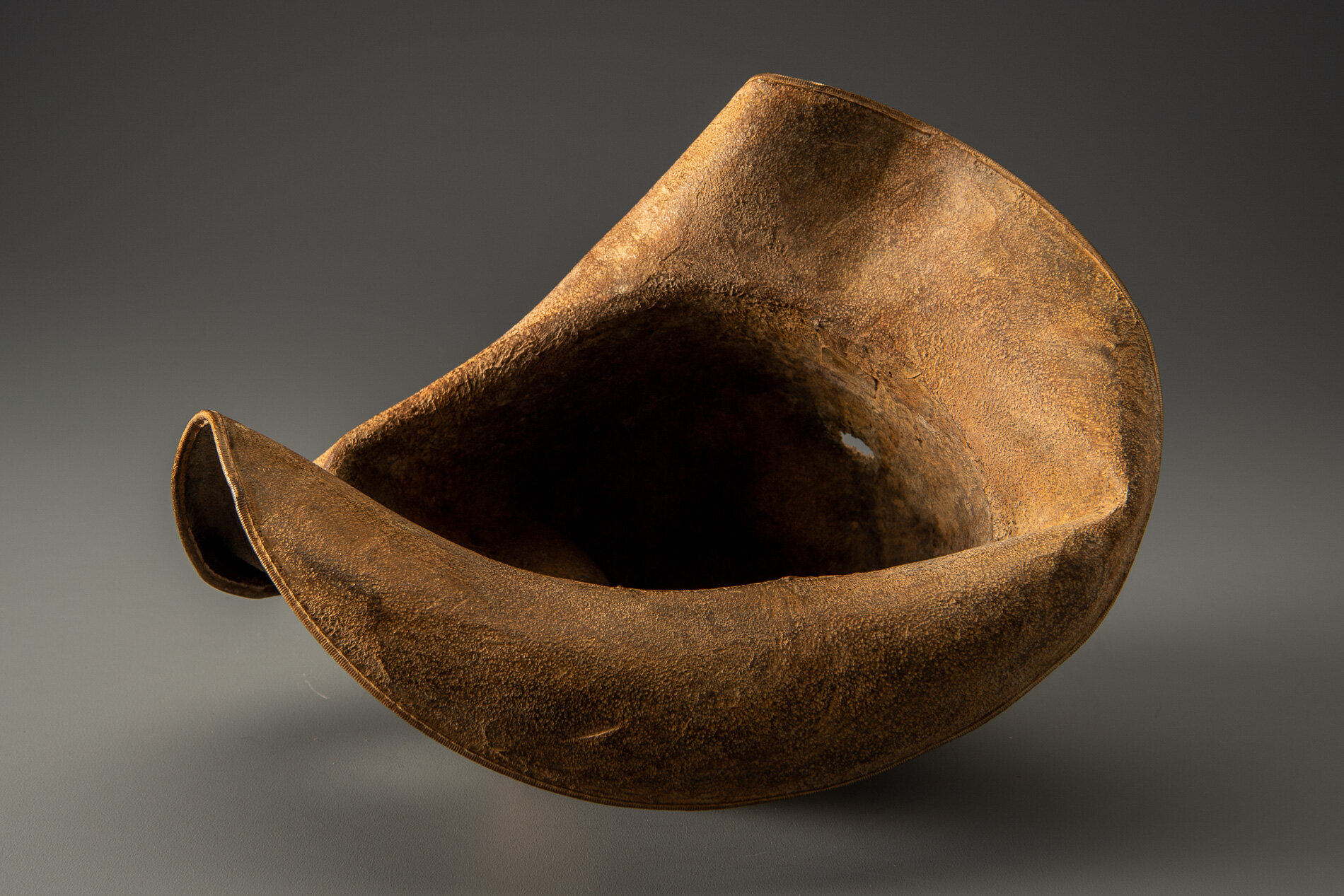
GUST—holistic management

SAME TIME NEXT YEAR 2017
4" X 13" X 8"
bronze
photo by Nash Baker
The sidewalks in my neighborhood are my nature trail. I walk with my eyes on the prowl for intriguing insects, exoskeletons, insect wings, feathers, dried flowers, twigs, leaves, seeds, and pods — things my children’s eyes taught me to find during our walks together over the years. Since 2013, these biological mementos have found their way into my bronze work in the molds of nests. Each piece is a reflection of that year’s ecology and records the time and movement of environmental restoration.
Initially, I was unaware of the landscape around me, but as my art dove deeper into environmental restoration and Hurricane Harvey changed our city, I realized that my days are, in fact, full of sterile surfaces. With COVID-19 quarantine, children in my neighborhood started venturing outside and looking for things to capture their curiosity. Delighted with their new interest, I realized that the green spaces and puddles children explore now are no longer filled with a diversity of life; the box turtles, bullfrogs, tadpoles, bumblebees, and assortments of flitting insects have evaporated with the spray of insecticides and herbicides in our neighborhoods. The selection is reduced to cicadas, the common beetle, honeybees, a rare native bee, and an abundance of Cuban lizards that dwell in turf grasses, boxwoods, crepe myrtles and oaks. I have awakened to cultural landscape uniformity. COVID has changed how I see the need for perfect lawns; the dirty truth is mosquito home-misting machines, obsessive weed control, artificial turf and a lack of plant diversity have turned urban neighborhoods into manicured monocultures for humans exploring video games. These habitat changes in massive population centers are fast-forwarding evolution: loss of wildlife habitat is one of the biggest threats facing many animal species. This does not have to be—it is a societal choice, the ability to speed up evolution can go both ways. Through my works – Lawndale’s Symbiosis, Endangered Knowledge: The Soul of Humus, Gust, World of Hum, Rumblings and Root to Water—I am committed to creating work that educates and helps communities change how we landscape our cities to include valuing the natural world and turning back the evolution.
In Dirt to Soil, Gabe Brown quotes Don Campbell, “If you want to make small changes, change how you do things, if you want to make big changes change how you see.” When I come across intriguing flora or fauna on my urban trail, albeit few and far between, I see them as evidence that can inspire a revolution in the landscape. If they are expired and will not decompose, I collect them. I see these bronze cast nests as urban wildlife fossils—biographies, every year a chapter recording Houston's environmental awakening. As an optimist—environmental—art—activist my work focuses on revealing endangered knowledge to change how we see urban landscapes and activate cooling the planet through our cityscapes. As migratory birds return year after year to build nests and raise their young, I return with optimism in my step. I envision witnessing the return of four hundred plus butterfly species and eight hundred bee species native to Texas. I can see this returned wildlife capturing my future grandkids' imaginations. I will tell them the story of how insects almost disappeared and how every yard is a micro-ecosystem and matters. I imagine their hands building nests with a diversity that I cannot imagine. I hear their voices telling me in one breath about the fuzziest-biggest bee they ever saw, covered in golden dust nesting in a patch of ground beneath the sunflowers not far from the silverleaf nightshade. I see them bringing me a tail-feather from a Red Shoulder Hawk and asking, "what does it hunt" and is it the bird that sounds like the squirrel's screech. After a rain, I see them finding two bullfrogs attached and their tiny ribbons of floating eggs in a pond. I hear them tell me not to touch the caterpillar of the southern flannel moth, and asking me, “how does it sting?”. At the low of evening when dragonflies hover; I will watch as they study the night heron’s quiet solitary stance as it stalks small citizens of the grass, I will smile as they question the raucous warnings of ravens and the scoldings of nut collecting squirrels. I will feel their excitement when neighborhood raccoons appear from storm sewers and scavenge treats from dog bowls and opossums waddle fence lines, searching out grubs and open garage doors. I will follow their eyes when the silent patrol of the lone coyote visits the shadows of our boulevards from their bayou bound dens. I let them sleep outside and hear their heavy eyelids ask, why do the owls ask who? I listen as they wake up to a concert of white-winged doves. I will feel peace when they are wise to nature.
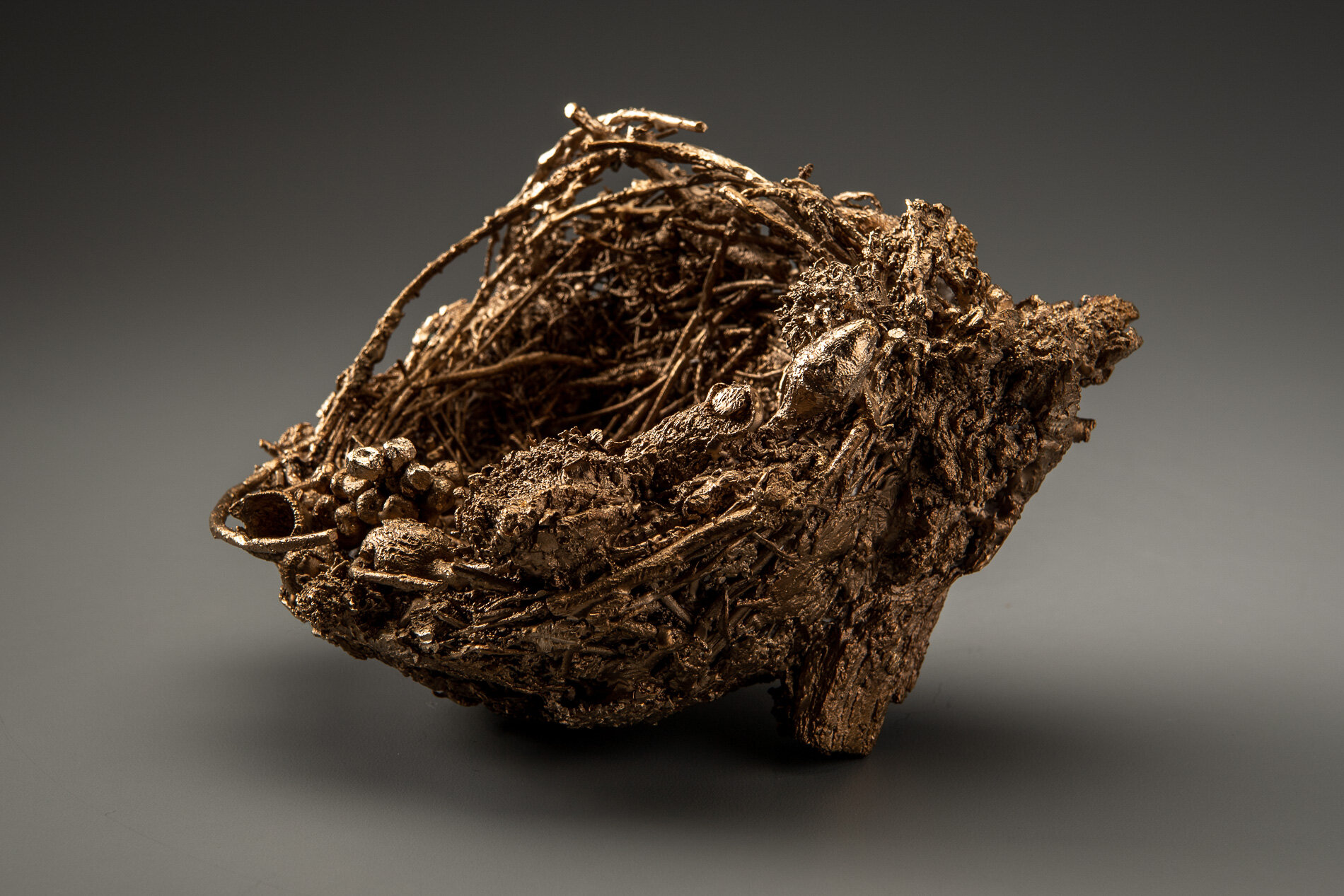
SAME TIME NEXT YEAR 2018
5” X 9” X 7.5”
bronze
photo by N. Baker
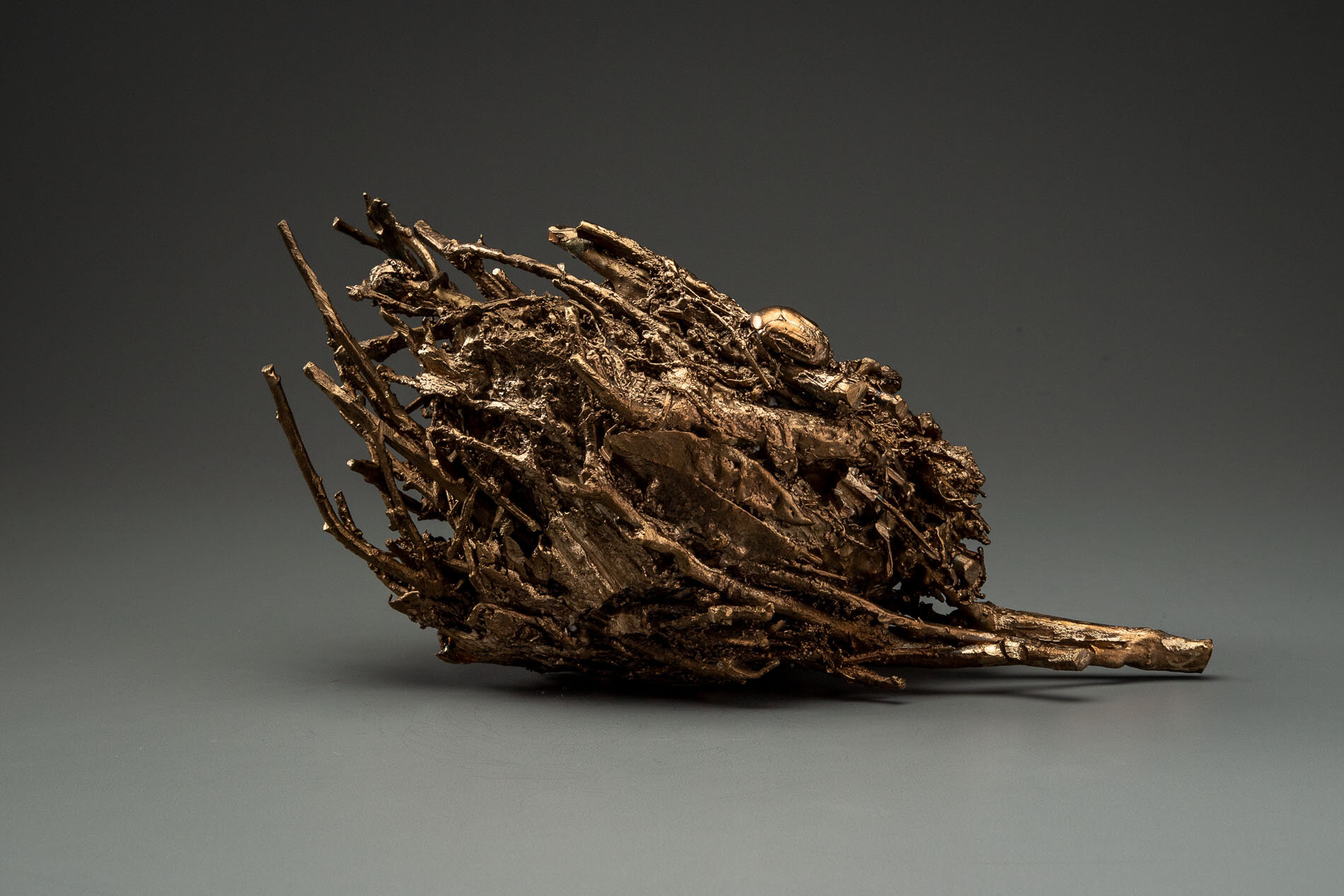
SAME TIME NEXT YEAR 2019
4.75” X 10” X 5.5”
bronze

SUBTERRANEAN SECRETS II
8.5” X 11.5” X 11.5”
bronze
photo by Nash Baker
Subterranean Secrets is part of my Endangered Knowledge work, a work in progress.
For several years, I have researched grass-fed food production, attended soil conferences, and visited regenerative ranches. Research in these fields reveal how to fight desertification and reverse climate change through regenerative agriculture practices. Interestingly, this natural history of living soil, how it evolved with roots, fungus, plants, food, and animals, carbon and their essential roles within microbial communities in human health, is not common knowledge. Subterranean Secrets excavates this crucial tool in storing carbon.

SUBTERRANEAN SECRETS I
10” X 9” X 13”
bronze and concrete
photo by Nash Baker

SUBTERRANEAN SECRETS III
9” X 7.5” X 13”
bronze
photo by Nash Baker
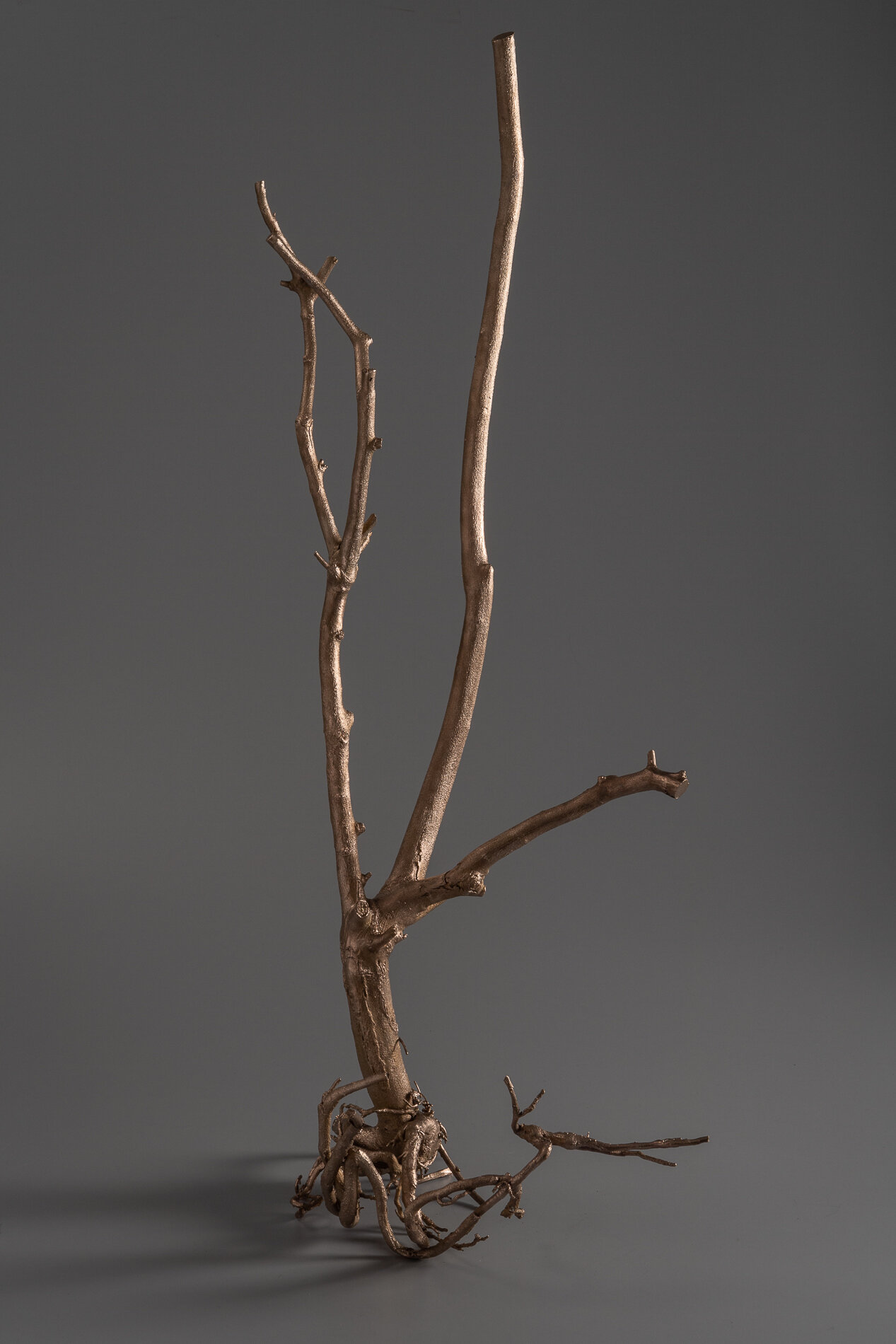
SUBTERRANEAN SECRETS IV
36” X 8” X 8”
bronze
photo by N. Baker
36” X 8” X 8”
bronze

MUTE TESTIMONY
4” X 8” X 6”
bronze
phot by Nash Baker
A fossil is our planet’s recorded history, the memoir of a life in a place, time, ecology, and evidence of global warming. It is Endangered Knowledge.
Many processes in art mimic fossilization, including casting or mold making. I crafted a mold of a fossil that one of my children found at my son Griffin’s 8th birthday party in El Paso, Texas. It was a fossil hunting party at Cerro de Cristo Rey. (It is an intersection of two countries and three states.) A prehistoric relic, now a family treasure, I thought it would be meaningful to make a mold and cast it in bronze for each of my two children, a reminder of their childhood. A mold-of-a-mold a fossil-of-a-fossil. I found the redundancy poetic.
My son is now 31 years old. I have hurried by the fossil at least once a day since Griffin was eight years old and did not think twice about it. Casting, it has forced me to think about the form and its value as an object of art. Evidence of aquatic life resurrected from the middle of the Chihuahuan desert. Hearing, “This desert was once an ocean.” did not phase me in the past. now, thinking about the mineral remnant of a sea creature surfacing in one of the driest terrains in the US gives me pause; it inspires me to consider how we can live our metropolitan lives and preserve natural systems.
— This poetic symbol of desertification will find meaningful ways to wander across disciplines into future environmental works.
I cast three additional fossils to share with others who are interested in natural history; two are finished in a natural patina and one in a contemporary finish — polished bronze.

SYMBIOSIS
a multi-year work in progress
53.5’ X 48’
found object, Lawndale Art Center sculpture garden, native plants, compost, and mulch
photo by Nash Baker
“We see nothing of these slow changes in progress, until the hand of time has marked the long lapse of ages.”
—Charles Darwin, Origin of the Species
As an artist, I am interested in the ways that sculpture and printmaking can incorporate time and movement. My work records endangered knowledge to the collective memory and reimagines urban landscapes to holistically balance the needs of humanity and wildlife.
In Symbiosis I am stretching my practice and creating a living piece of site-specific art activism that will reimagine a 53.5’ X 48’ traditional urban landscape/sculpture garden and answer the question: how do we holistically restore an ecological balance in Houston? Symbiosis is a collaboration with Lawndale Art Center’s community, neighbors, urban wildlife, and the coastal prairies carbon cycle.
The Mary E. Bawden Sculpture Garden's terrain, with its manicured landscape functions as a living found object. In phases, I will implement holistic regenerative agriculture concepts with sculptural techniques of carving and assembling, utilizing ordinary tools to manipulate organic materials such as water, clay, and carbon in a manner that will absorb light and store carbon. Together, with partners from the Lawndale community, we will sculpt the surface into the textures, colors, and scents that attract and support Houston’s urban wildlife, inviting living organisms to return to the space. Symbiosis will be a living, breathing installation, that stores carbon and absorbs rain. As temperatures dip, Symbiosis will mark the slow changes in progress; a vibrant field of greens spiked with hues of blues, cones of purples, and splashed with rods of gold will fade into winter. The withering flora will be stored as carbon in the soil of life. Their roots will follow creating cavities and nourishment for subterranean citizens to dwell and micro underground storage facilities for future downpours. Spring showers will trickle from leaf to leaf and dribble into the expanding brown sponge of living organisms, refreshing the living. A rising eastern sun will drape the surface with silent bells and clusters of stars tinted pinks and reds, bringing birds and butterflies. The likes of bustling Bombus penslyvanicaus quivering among the stamen and the stigma will deliver summer’s bounty. Every season the patina will reflect a new light, transform energy, and attract a kinetic array of species that will stipple the installation with flutter and buzz. Time will be marked by the installation’s natural rhythms and carbon cycles: when the Carolina Wren’s whistles wake up the morning, when silver haired bats fly during a summer sunset, when the Eastern Screech owls search the dark as male Mockingbirds practice their solos at full moon. It will saunter to the rhythm on the migratory pathway of the Coastal Prairie ecosystem and set its stage for urban regional art exhibitions. In the city known for its diversity of people, the garden will become a space for the voices of contemporary imaginations to sing with their natural history and influence its cultural and ecological future.
As the hand of time marks the long lapse of ages we will reconnect with the unique local landscapes that define and support Houston, Texas.
Additional information and reading
- How Non-Native Plants are Contributing to Global Insect Decline
- Roundup herbicides, with glyphosate used in urban settings impacts Earhtworms ability to provide
- Contain Multitudes, The Microbes Within Us and A Grander View of Life, By Ed Young
- Dirt: The Erosion of Civilizations, by David R. Montgomery
- Allan Savory on how to fight desertification and reverse climate change
- Soil as Carbon Storehouse: New Weapon in Climate Fight? - Yale E360
- Soil Biology and Land Management
- How shocking events can spark positive change, Naomi Klein, Ted Talks Daily, July 28,2020
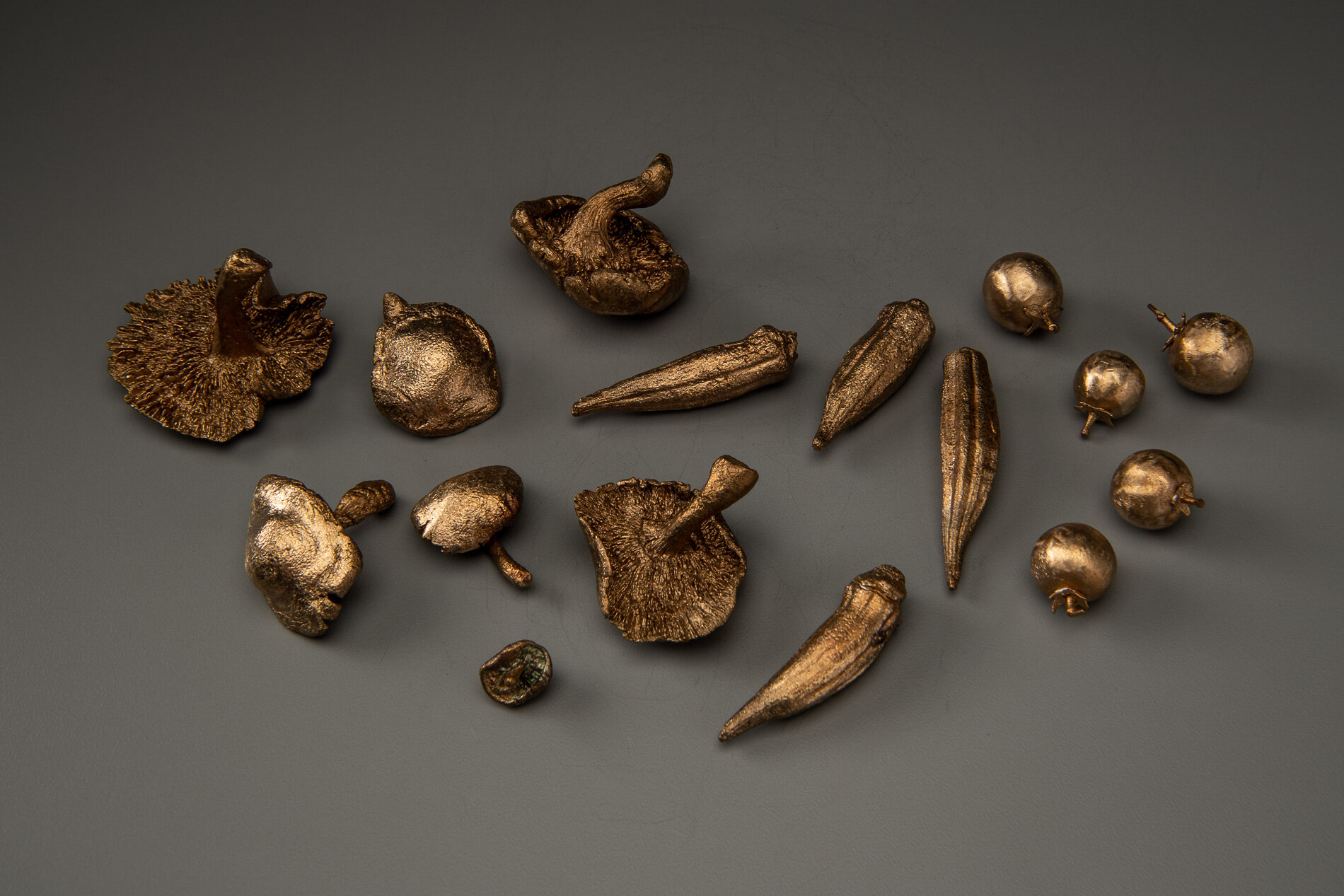
WHOLE FOODS
size varies
bronze
photo by Nash Baker
This work is a minuscule response to Frankenfood.
I welcome studio visits and the opportunity to discuss my work and learn how others respond to it. These small bronze pieces are studio visit gifts; they are my way of showing my gratitude for those who are interested in my environmental view. Email me for a time to stop in for a visit. And select a bronze whole food mini sculpture.
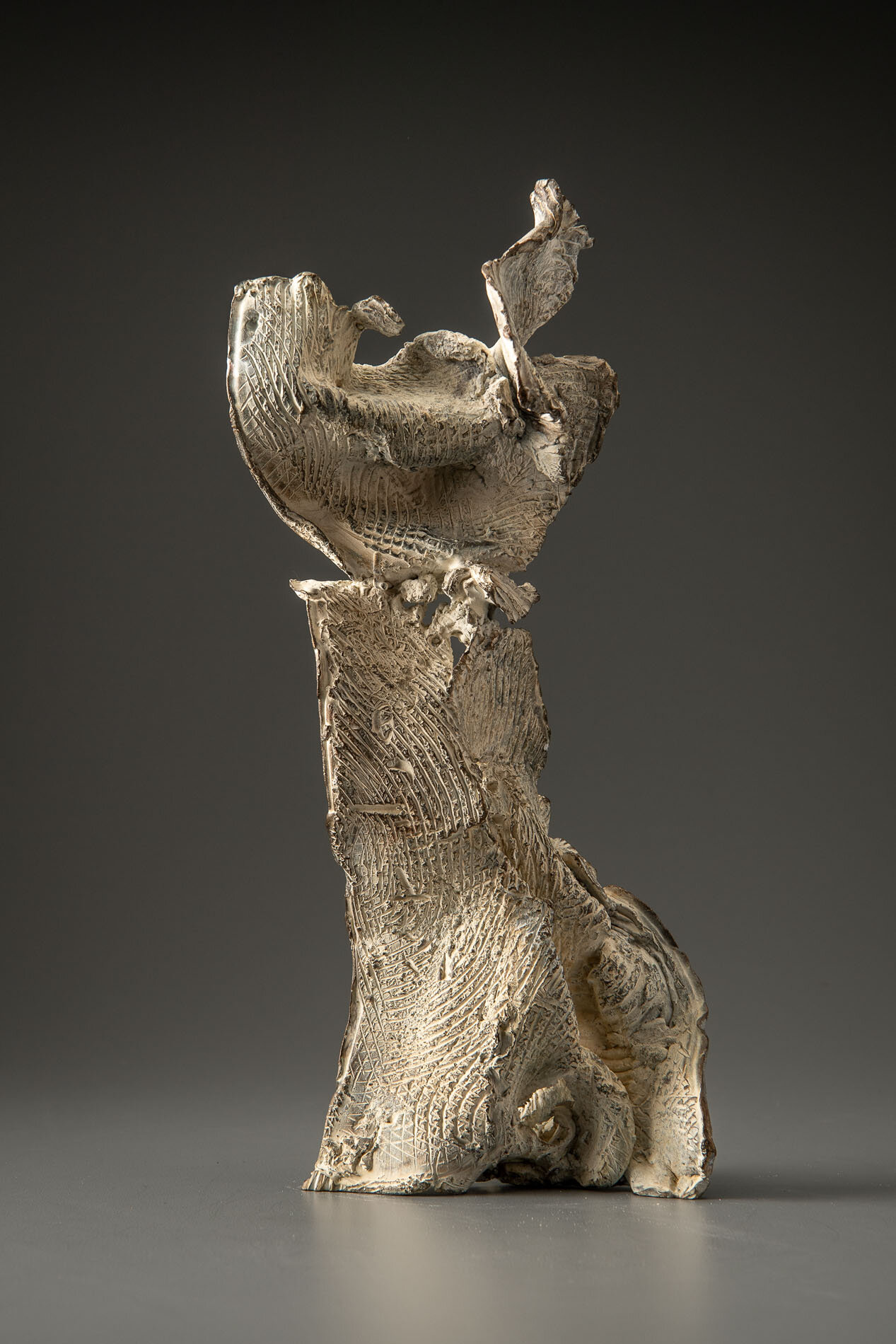
WHAT WE THINK WE BECOME
12” X 4” X 2”
bronze
photo by Nash Baker
Humans choose how we react and how we see. “What You Think You Will Become.” I have found this to be true. The surface texture of the piece is composed of repetitive arched lines; and mirrored in the profiles and contours of the work. The more extended narrative regarding what we think we become is posted in my blog.

HUMDINGER
50” X 120” watercolor monoprint
